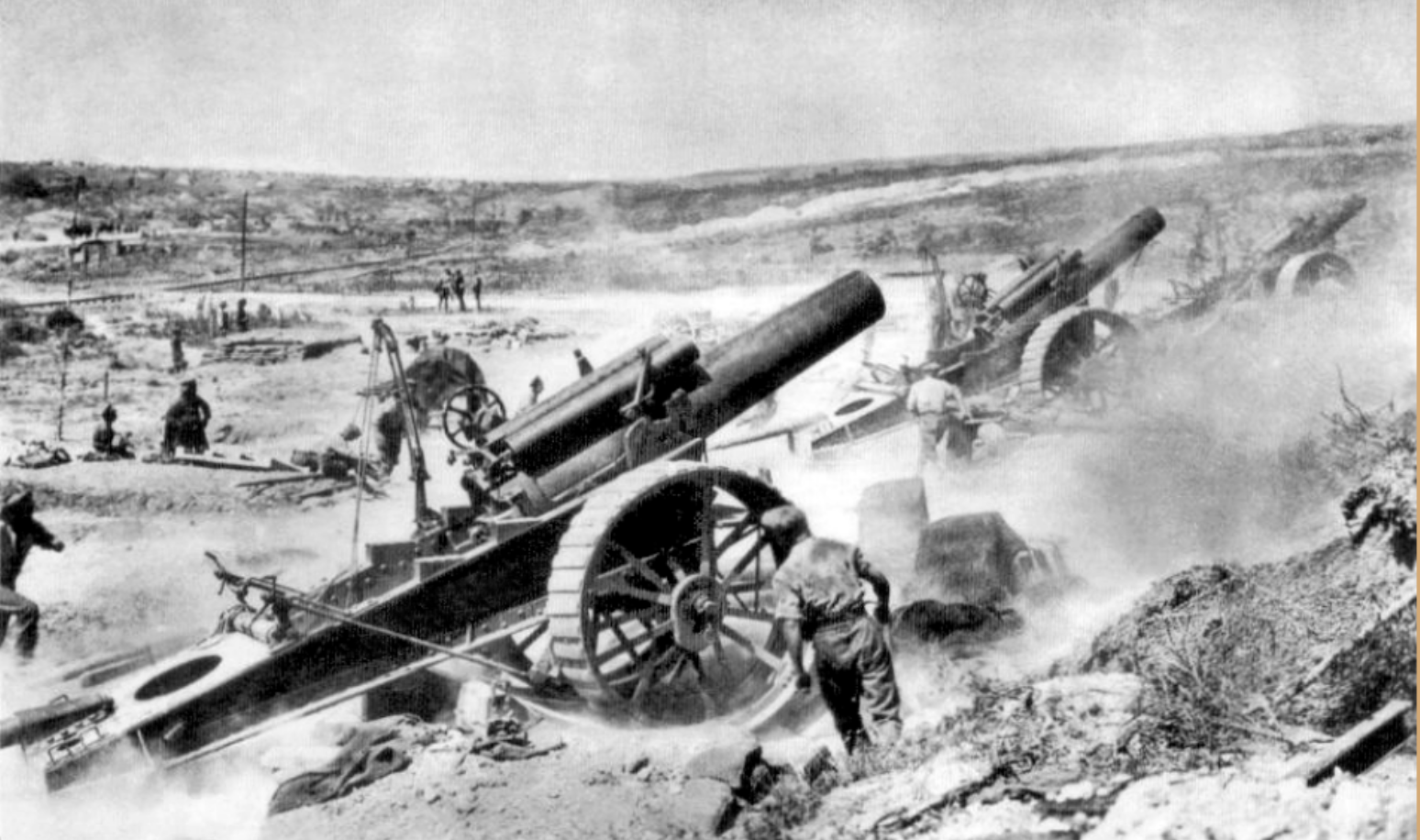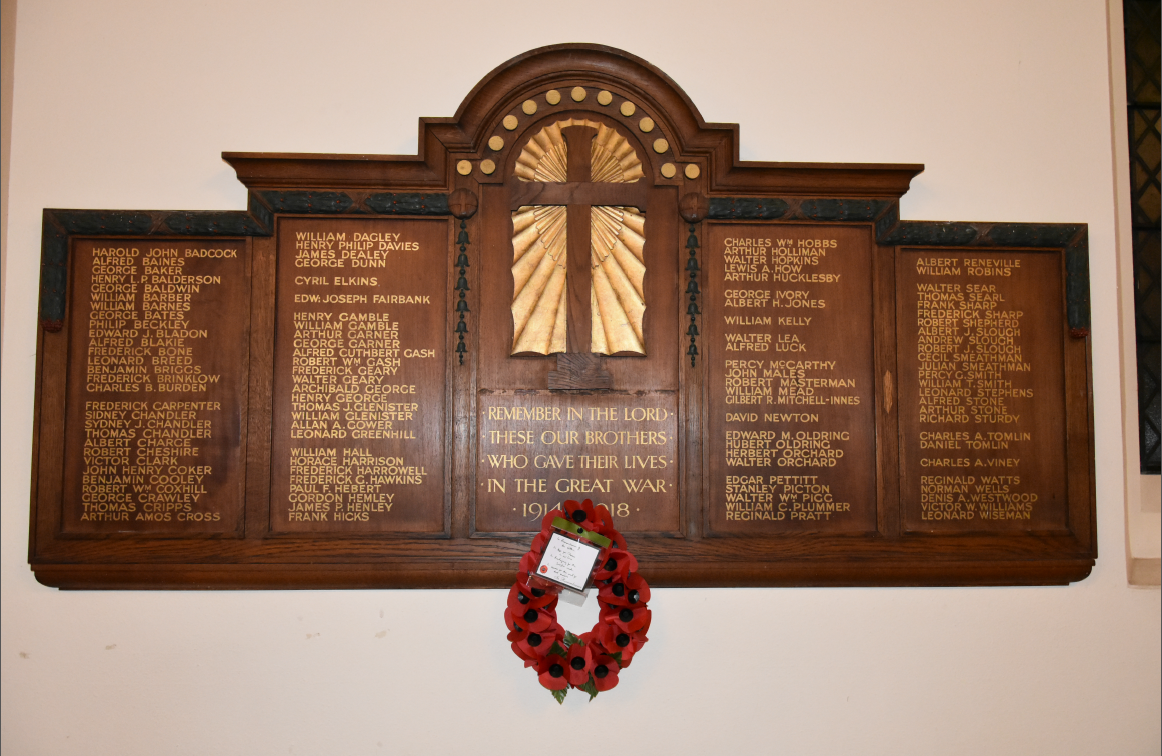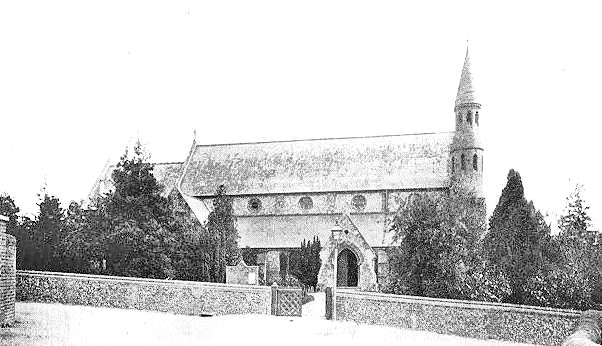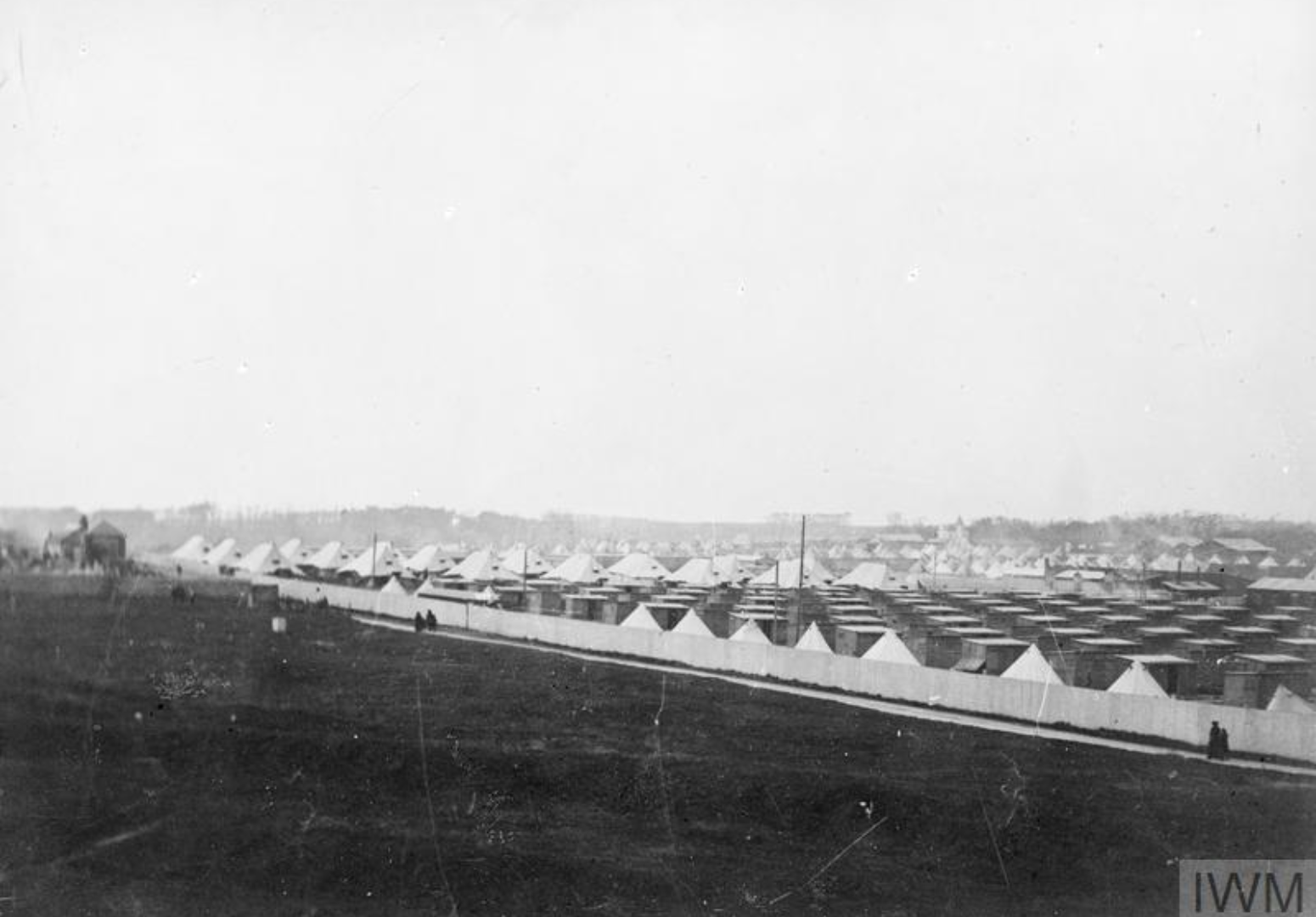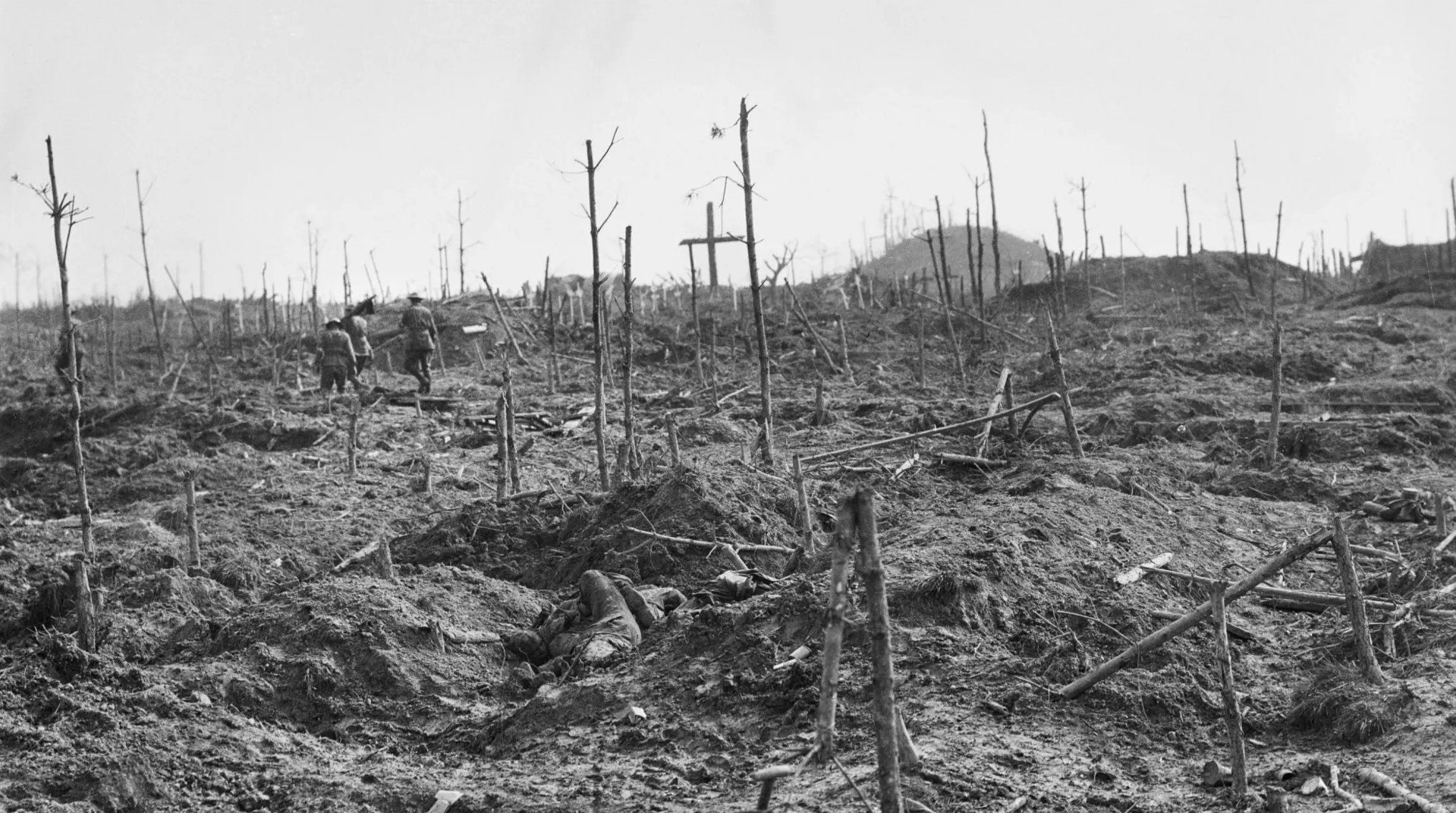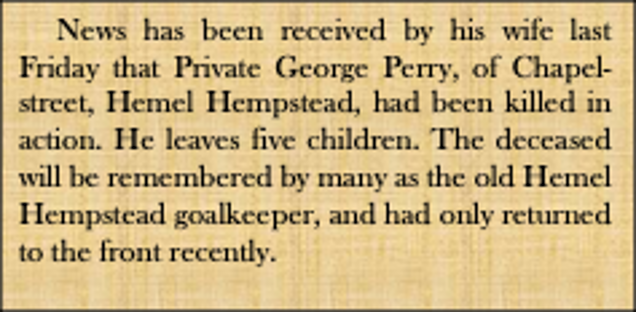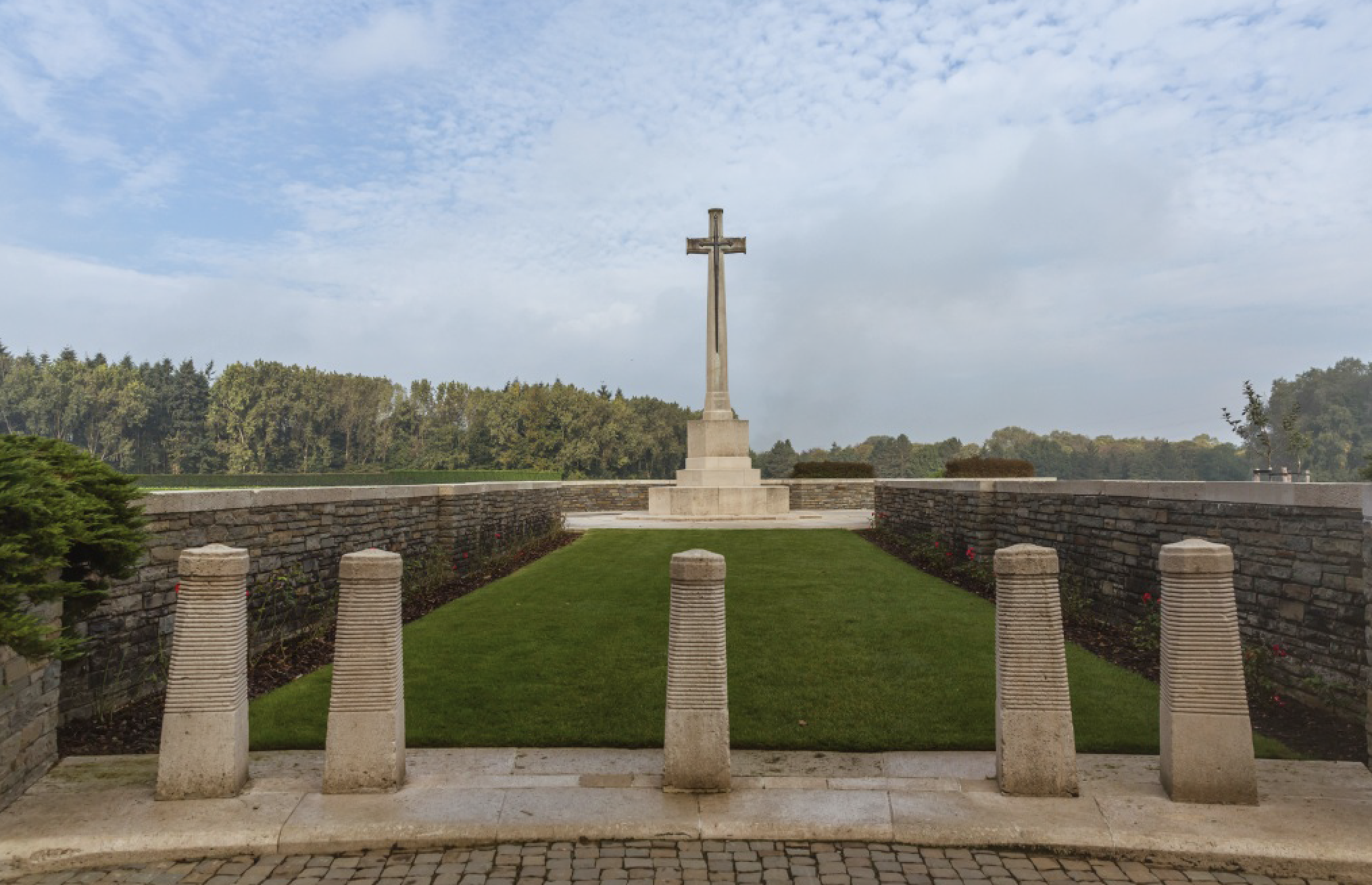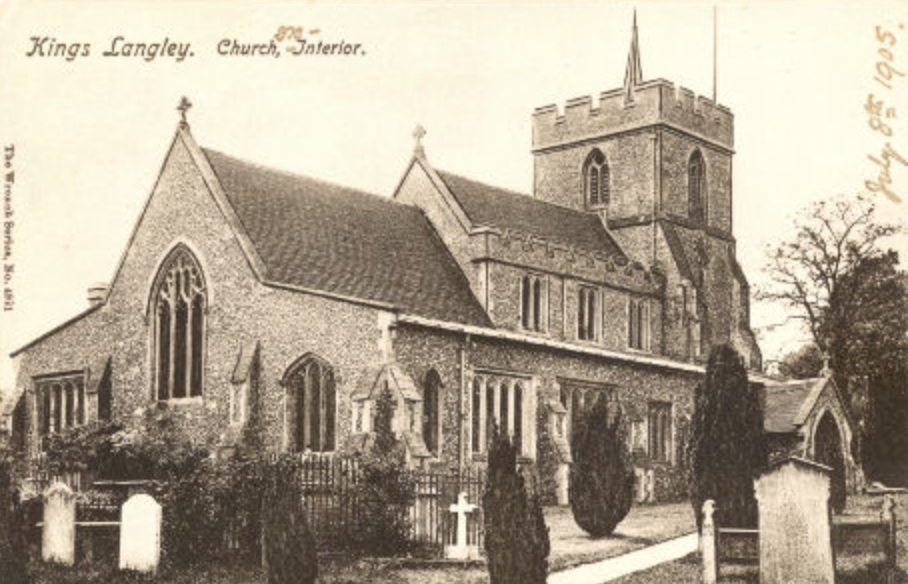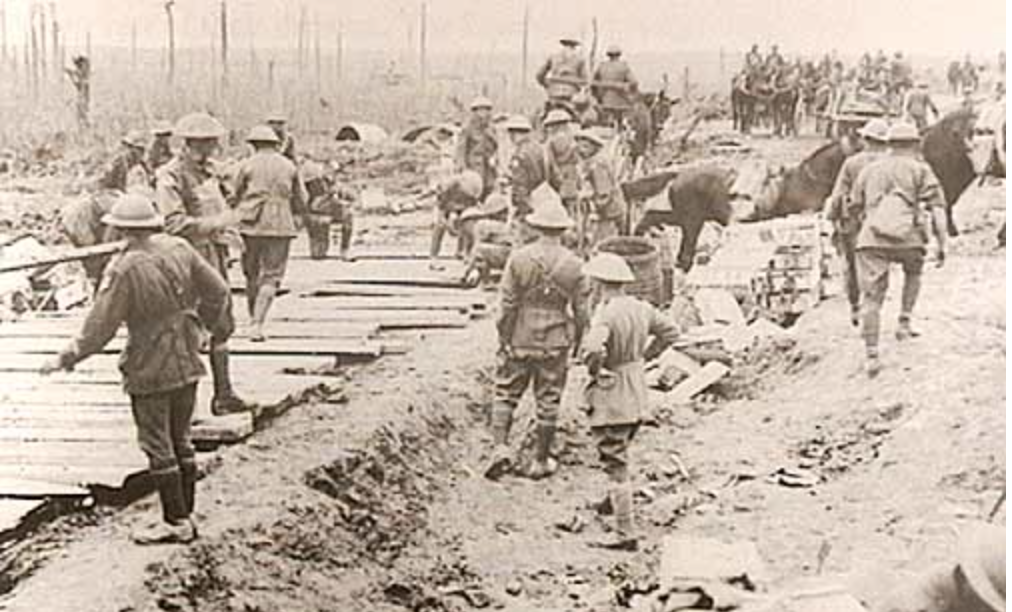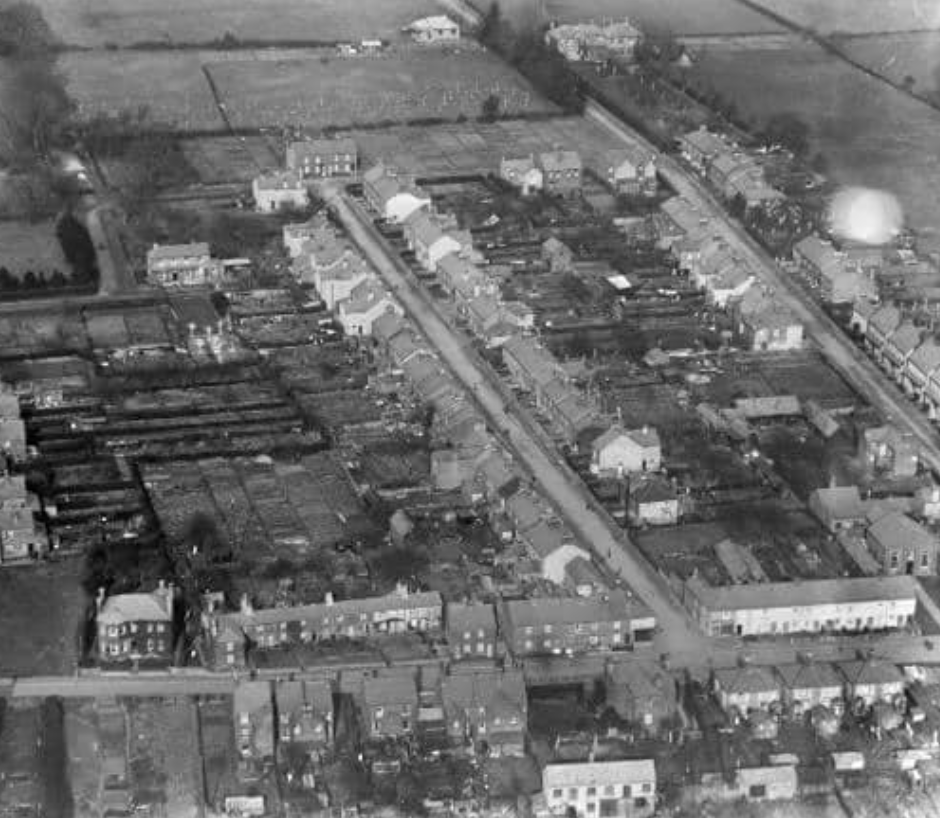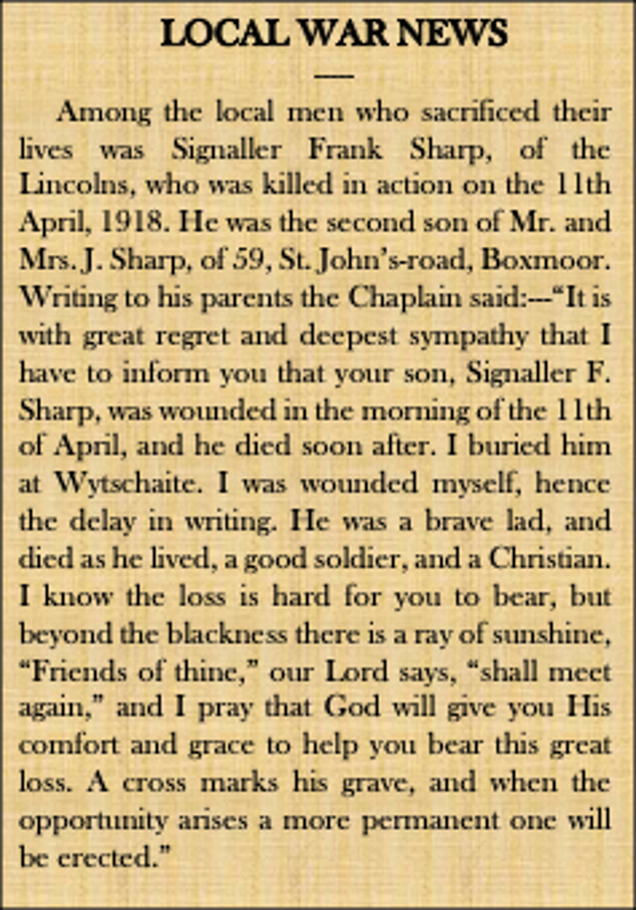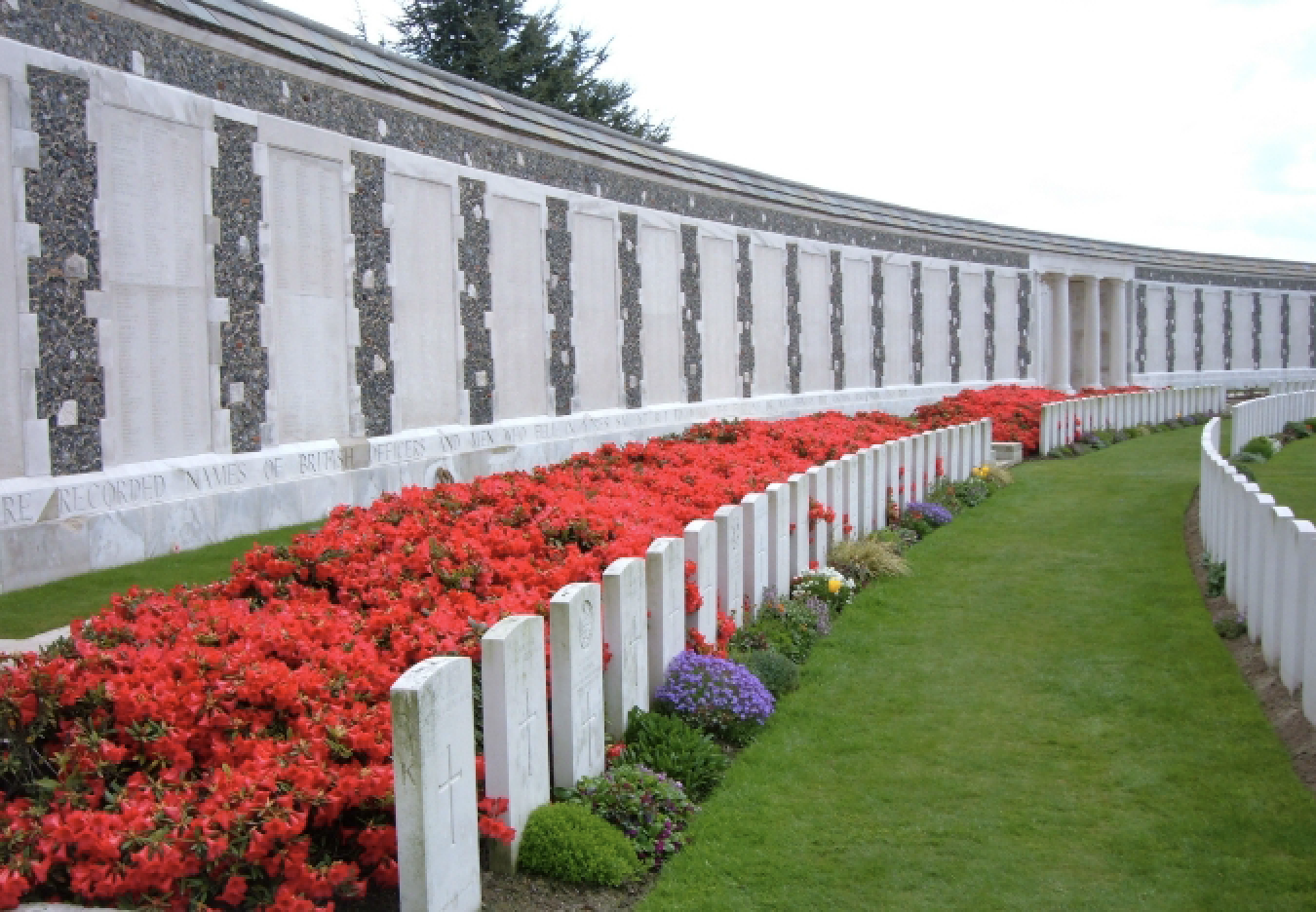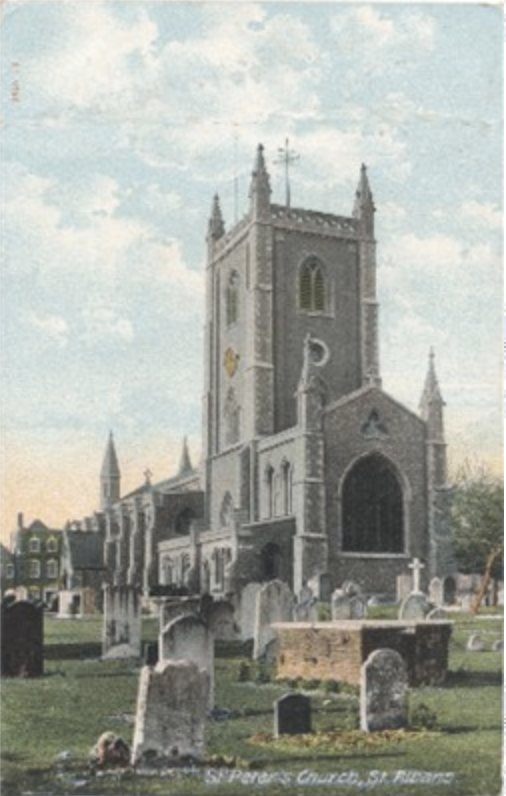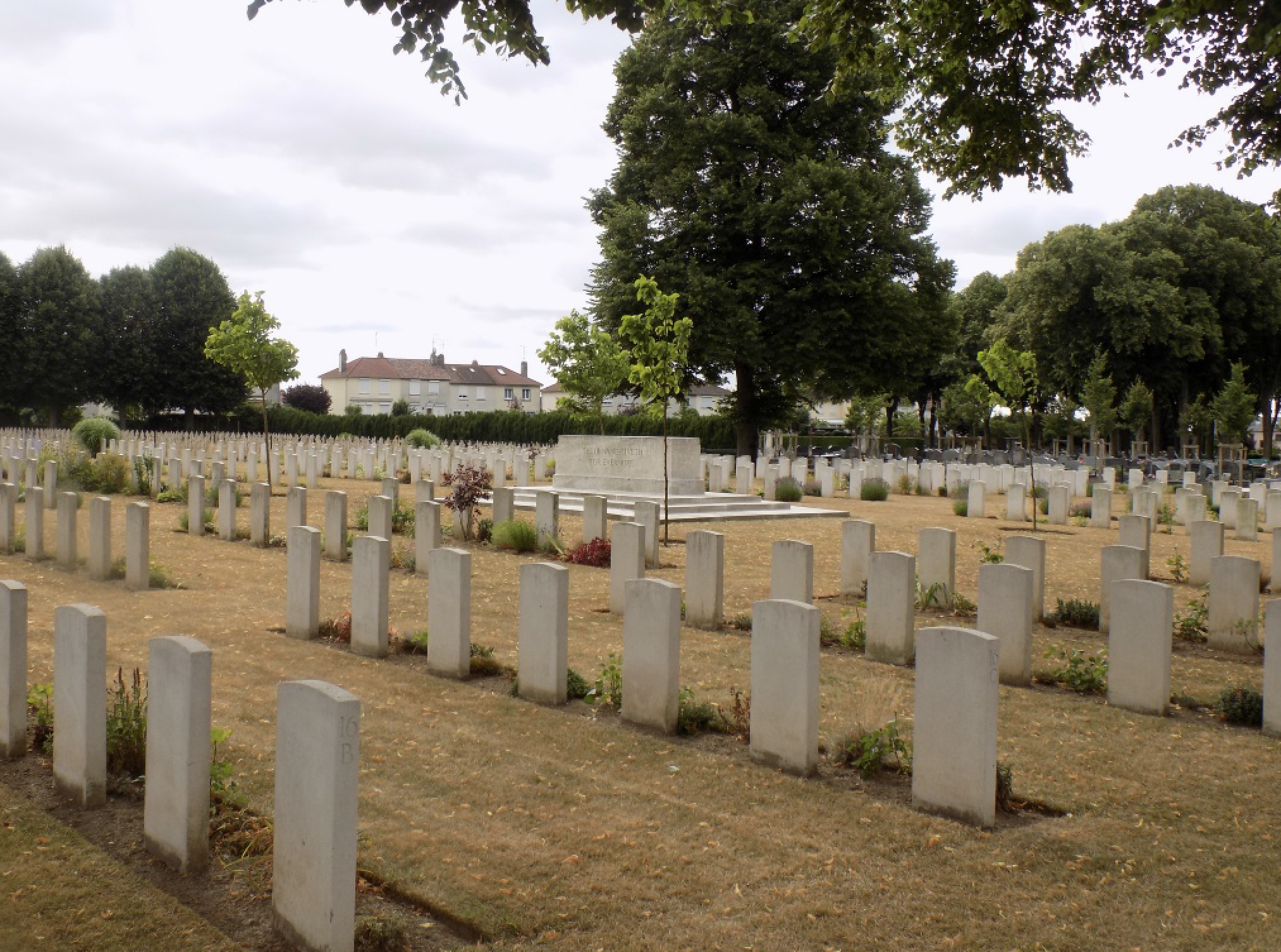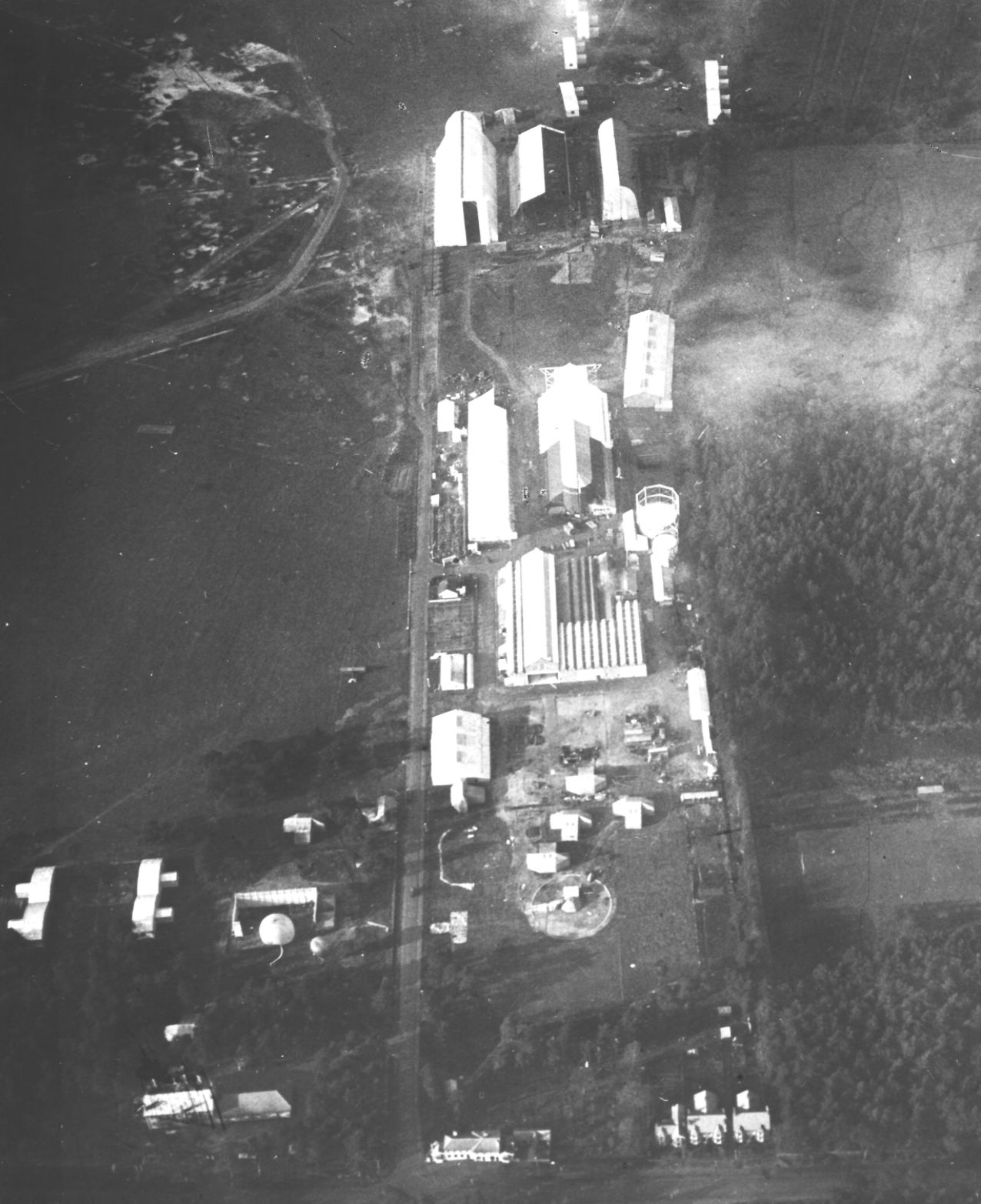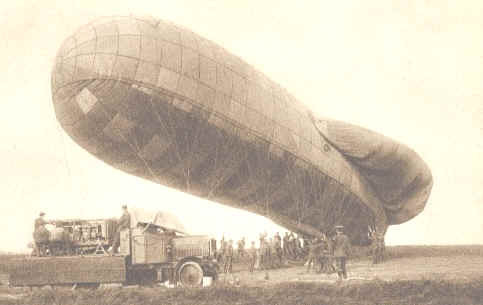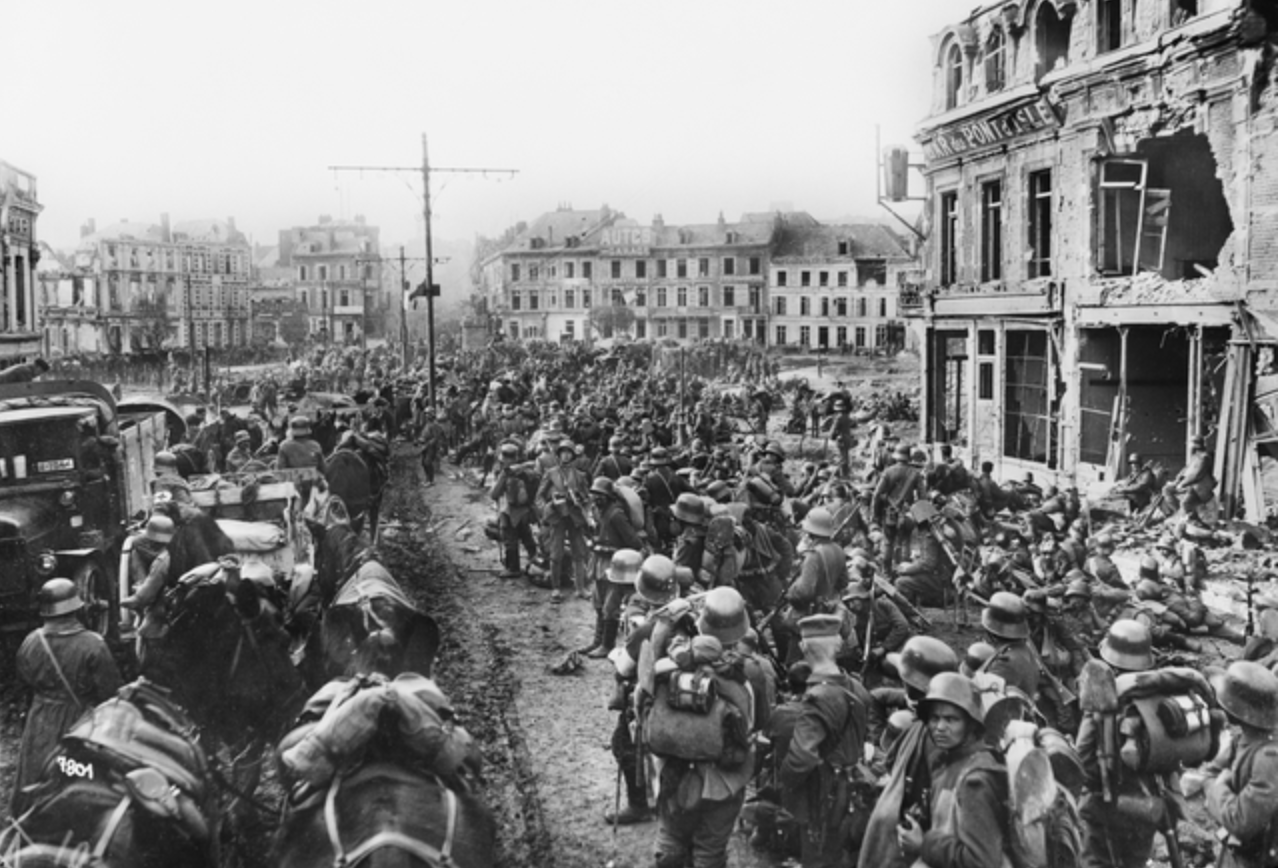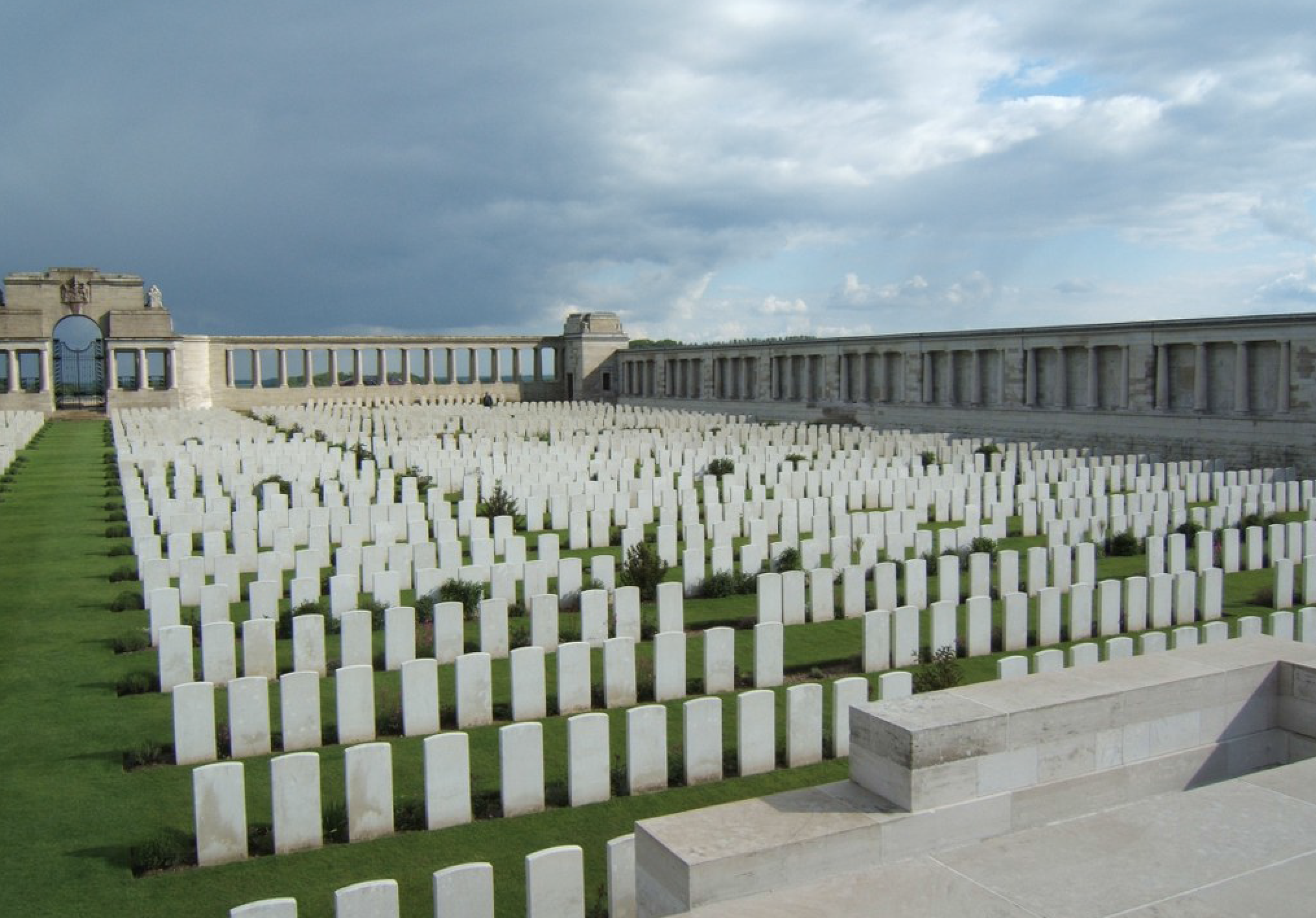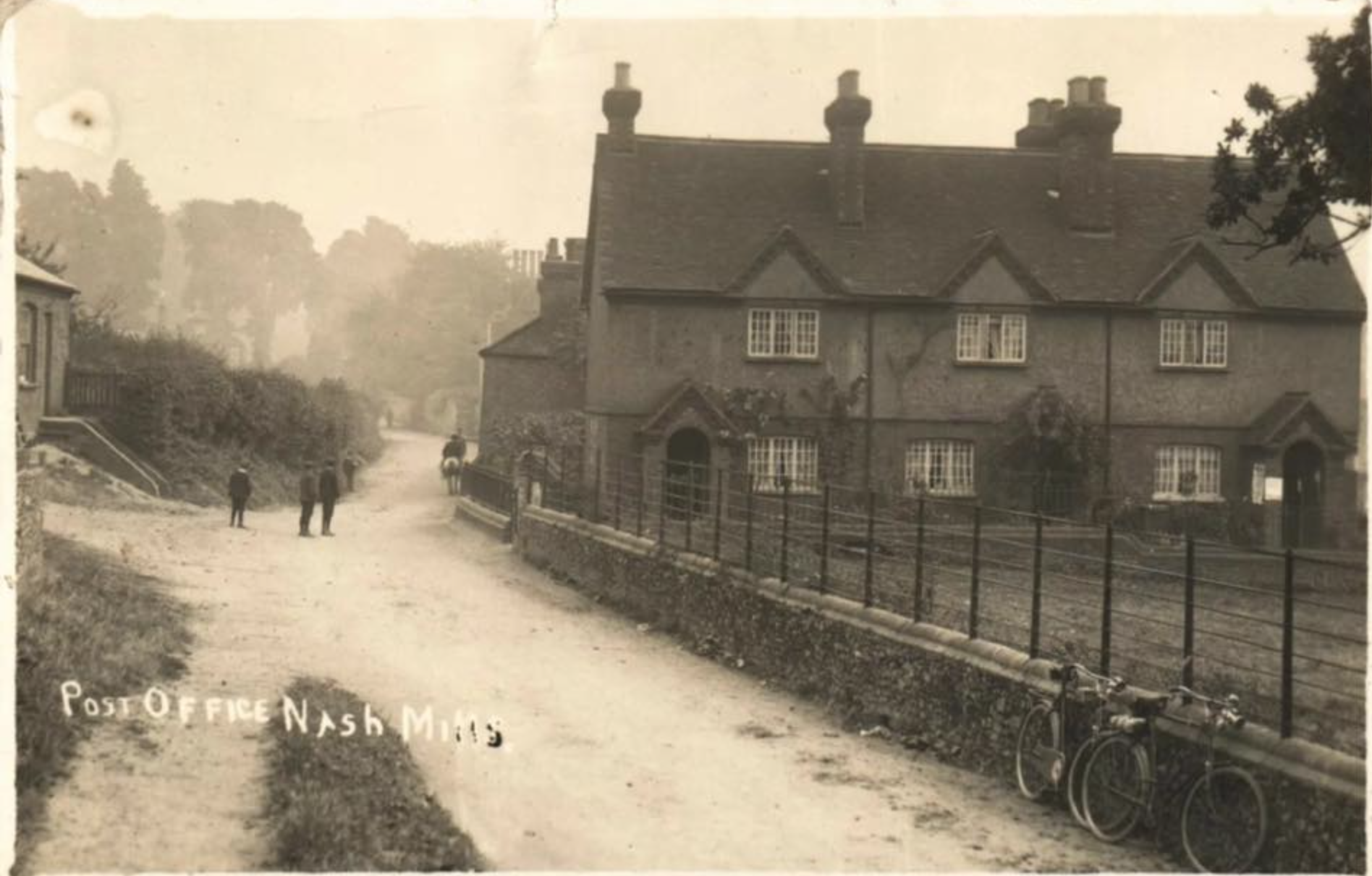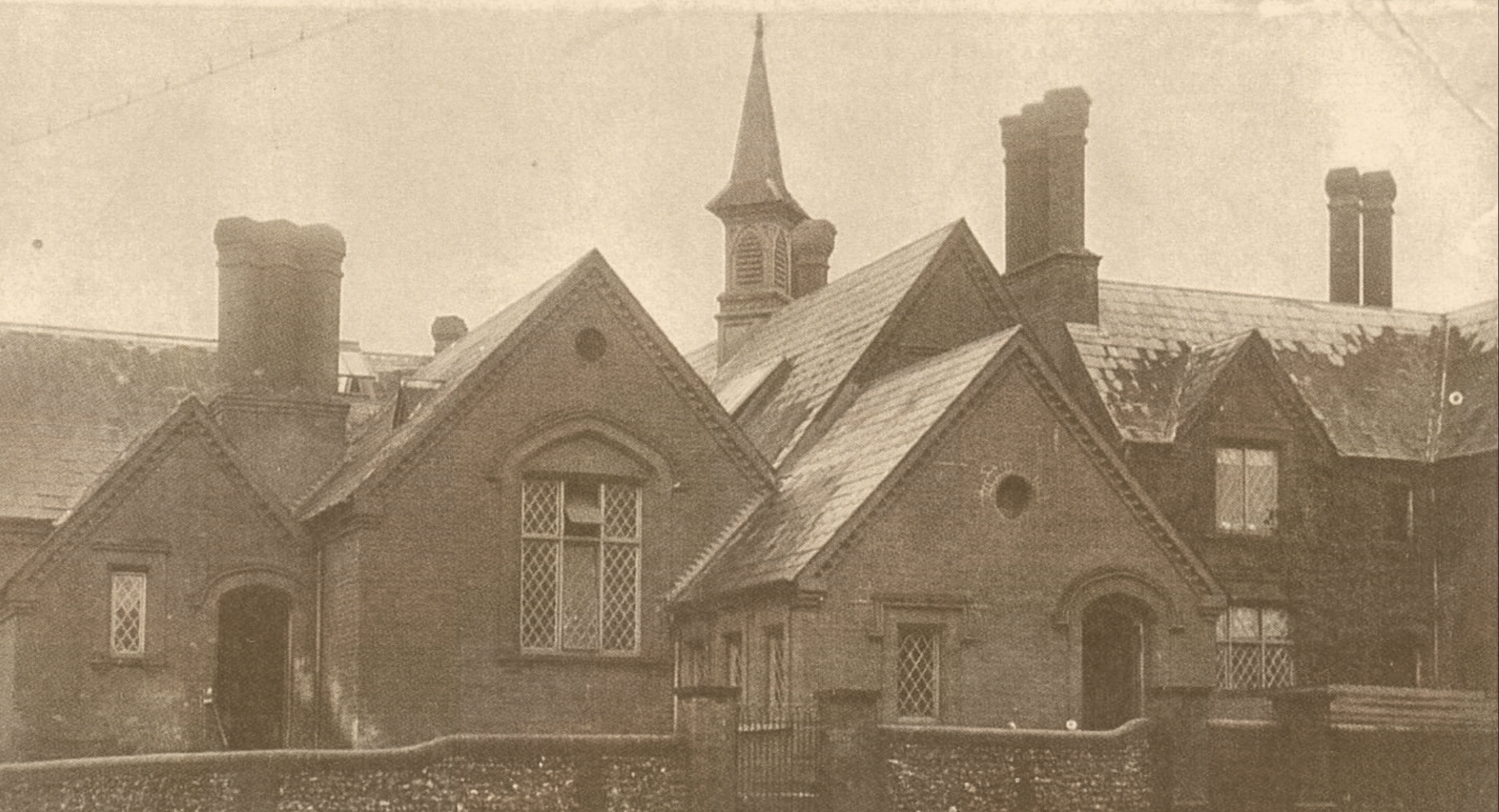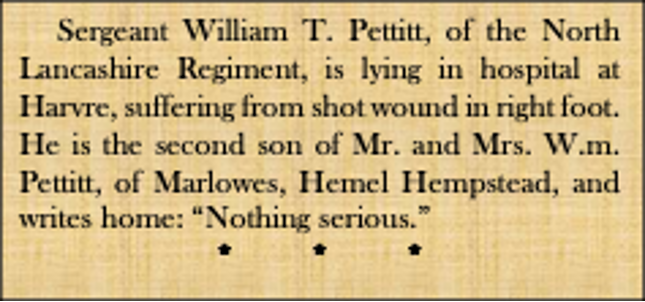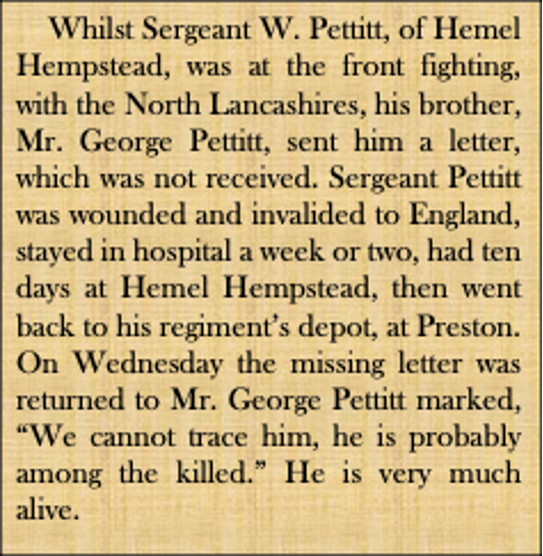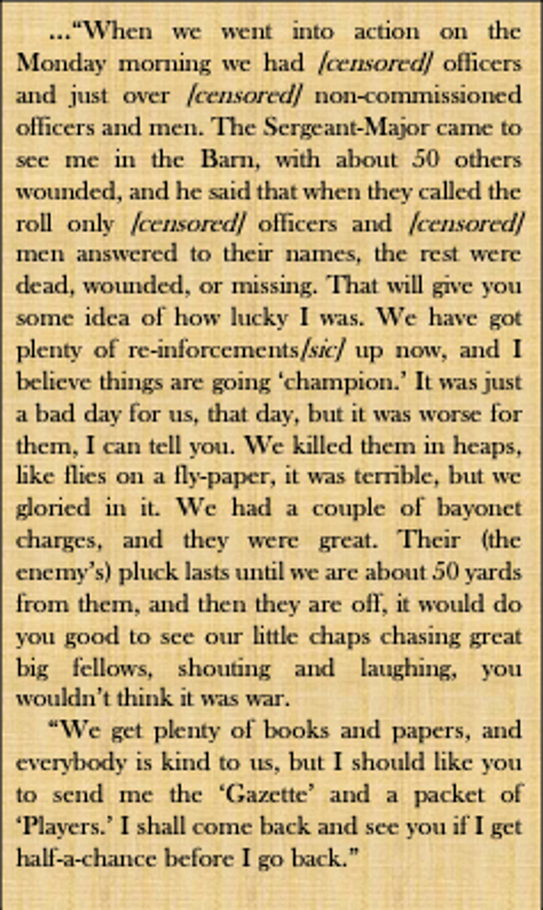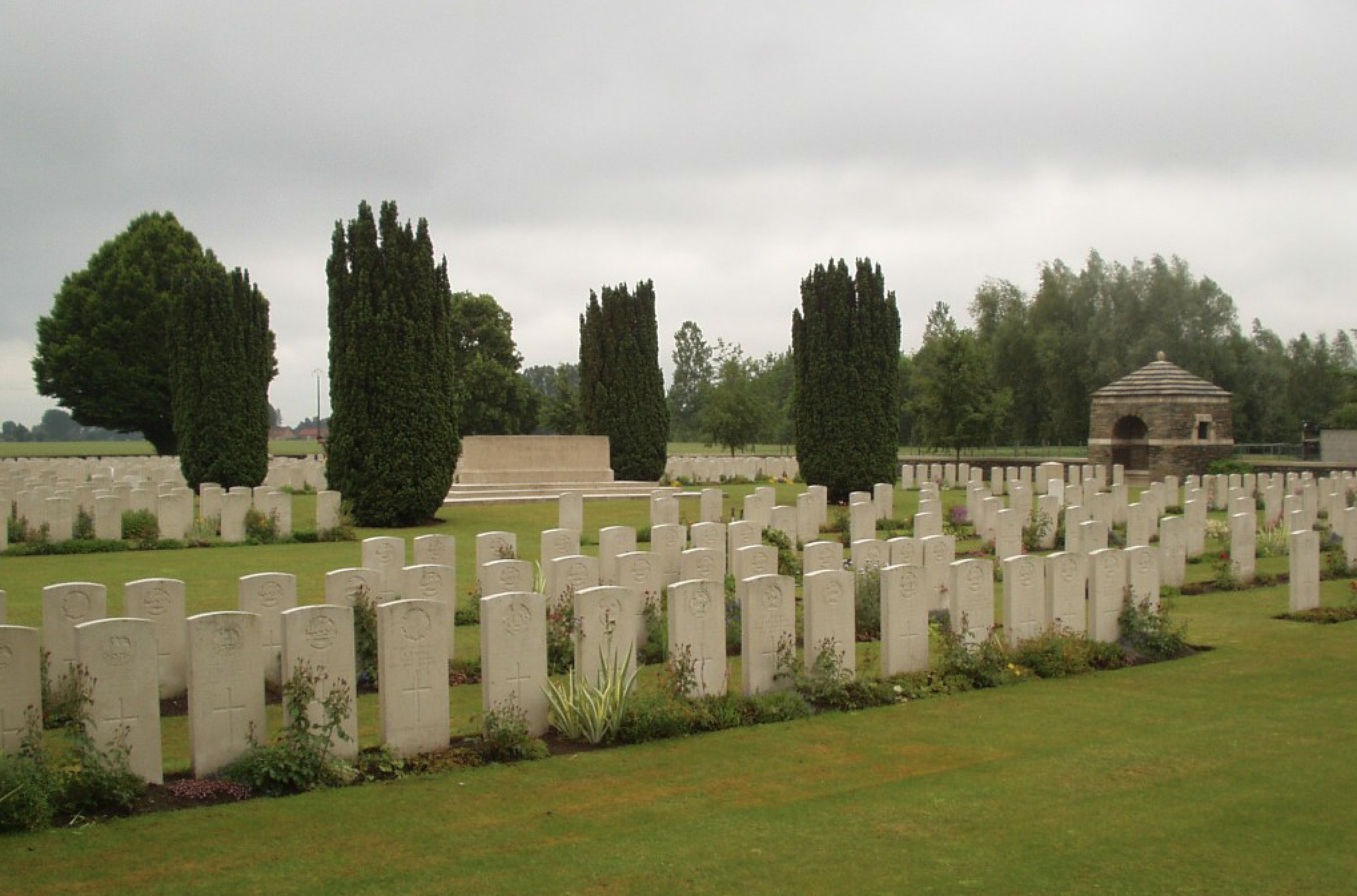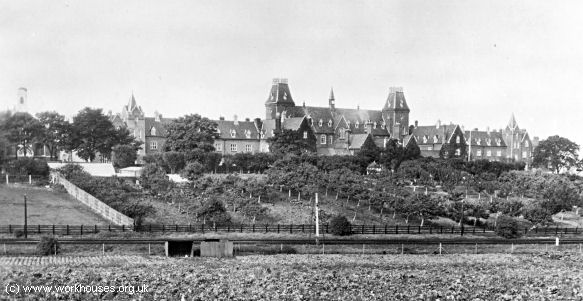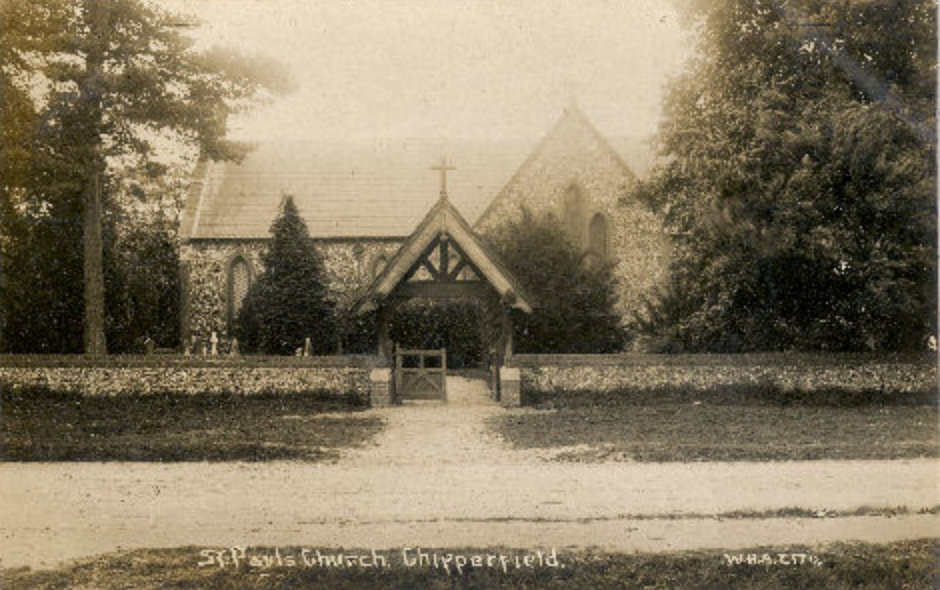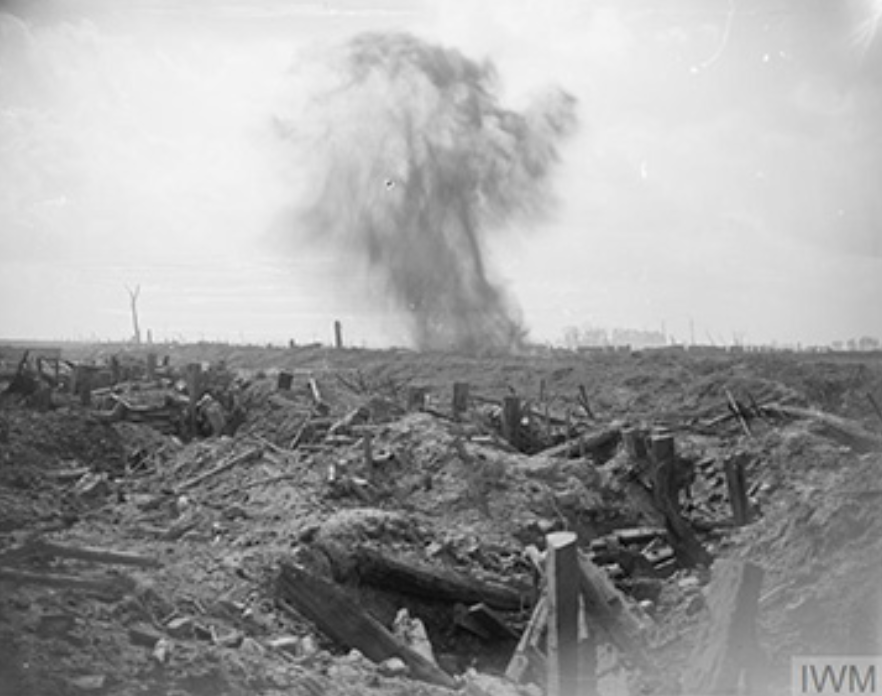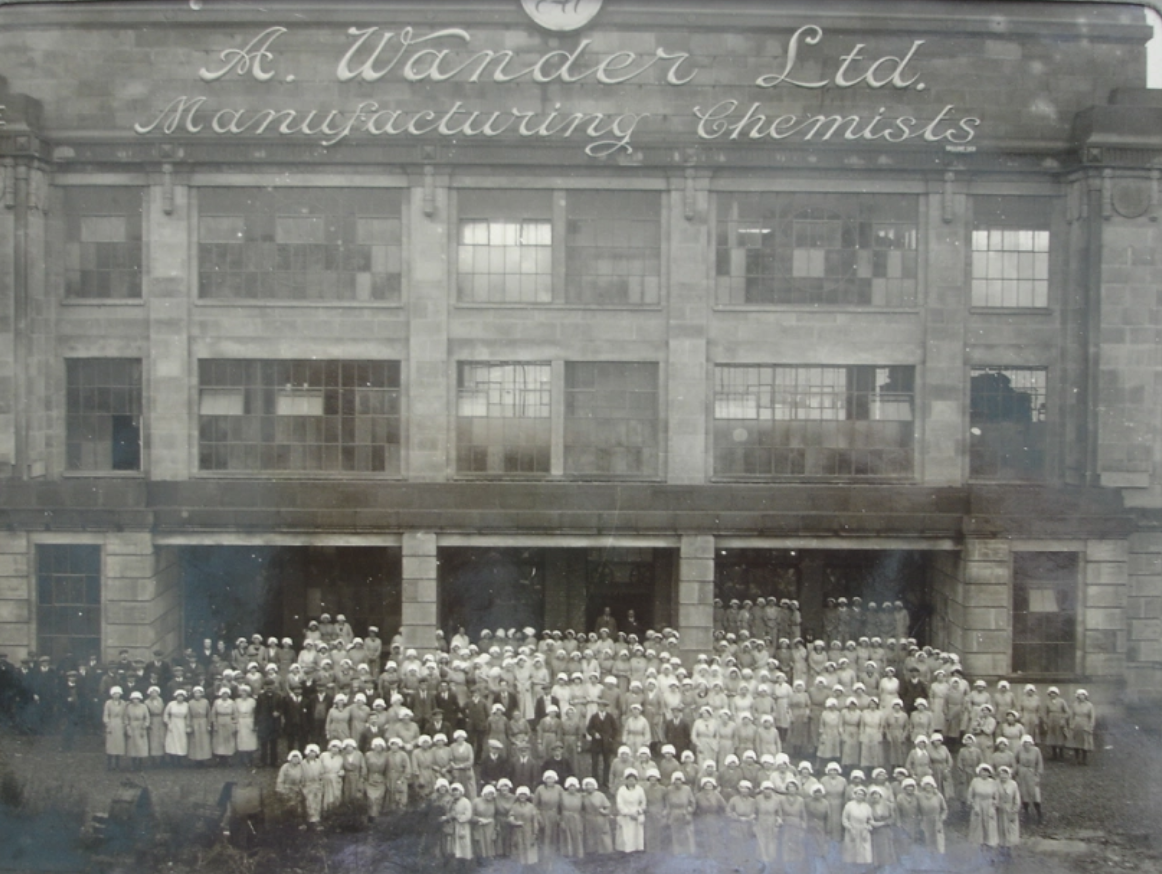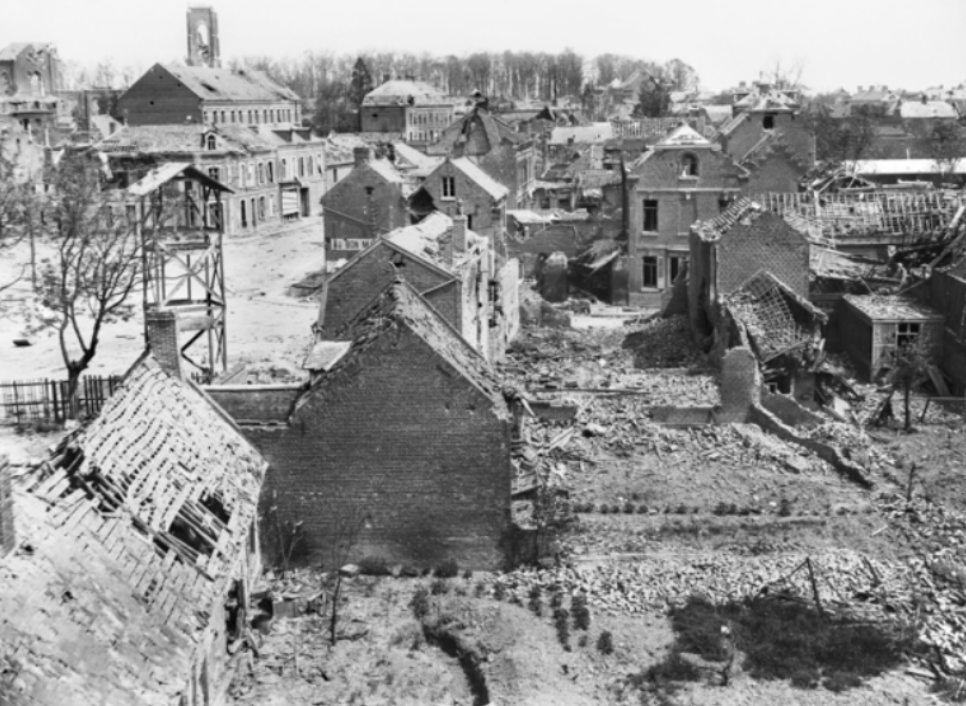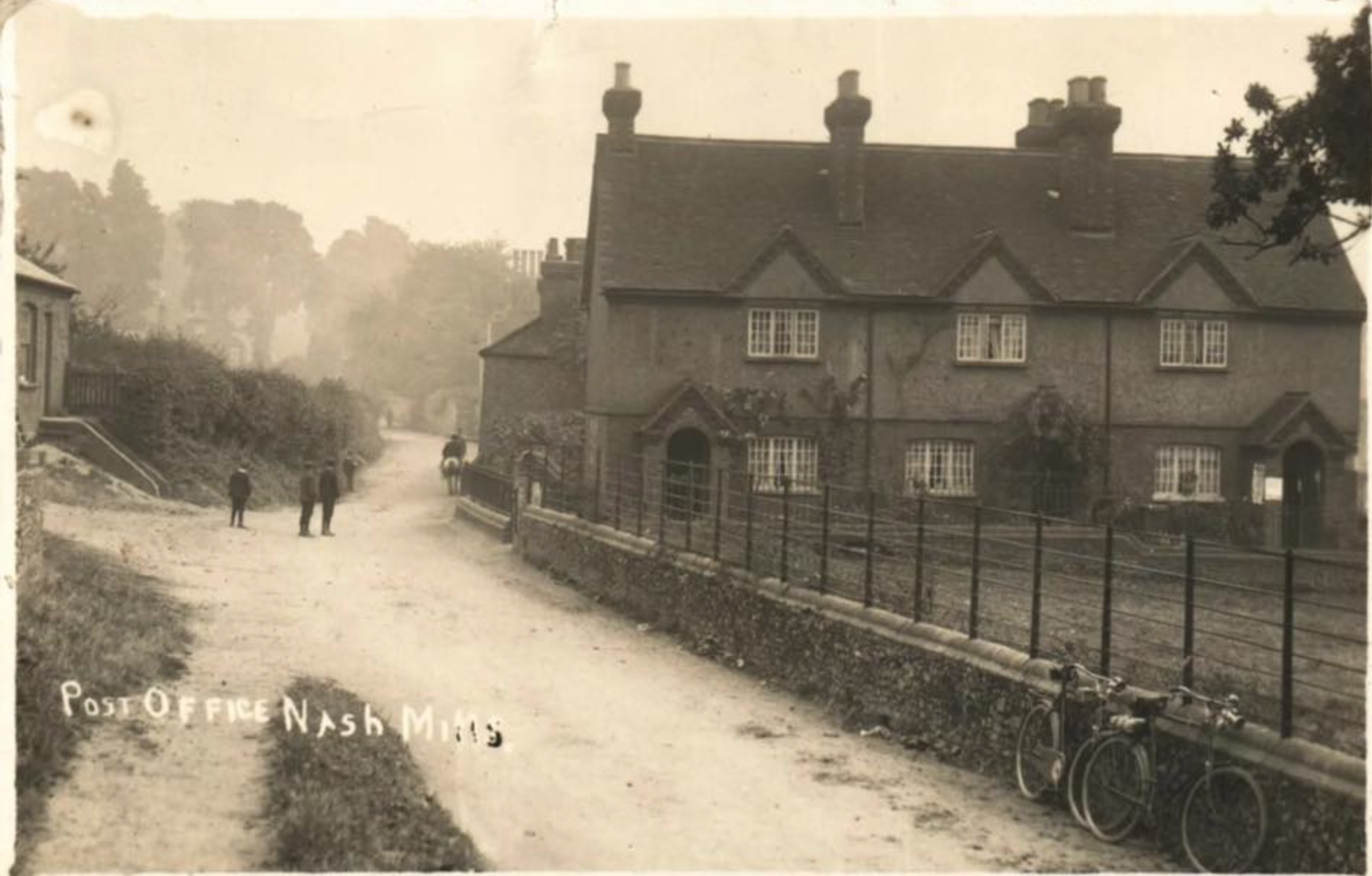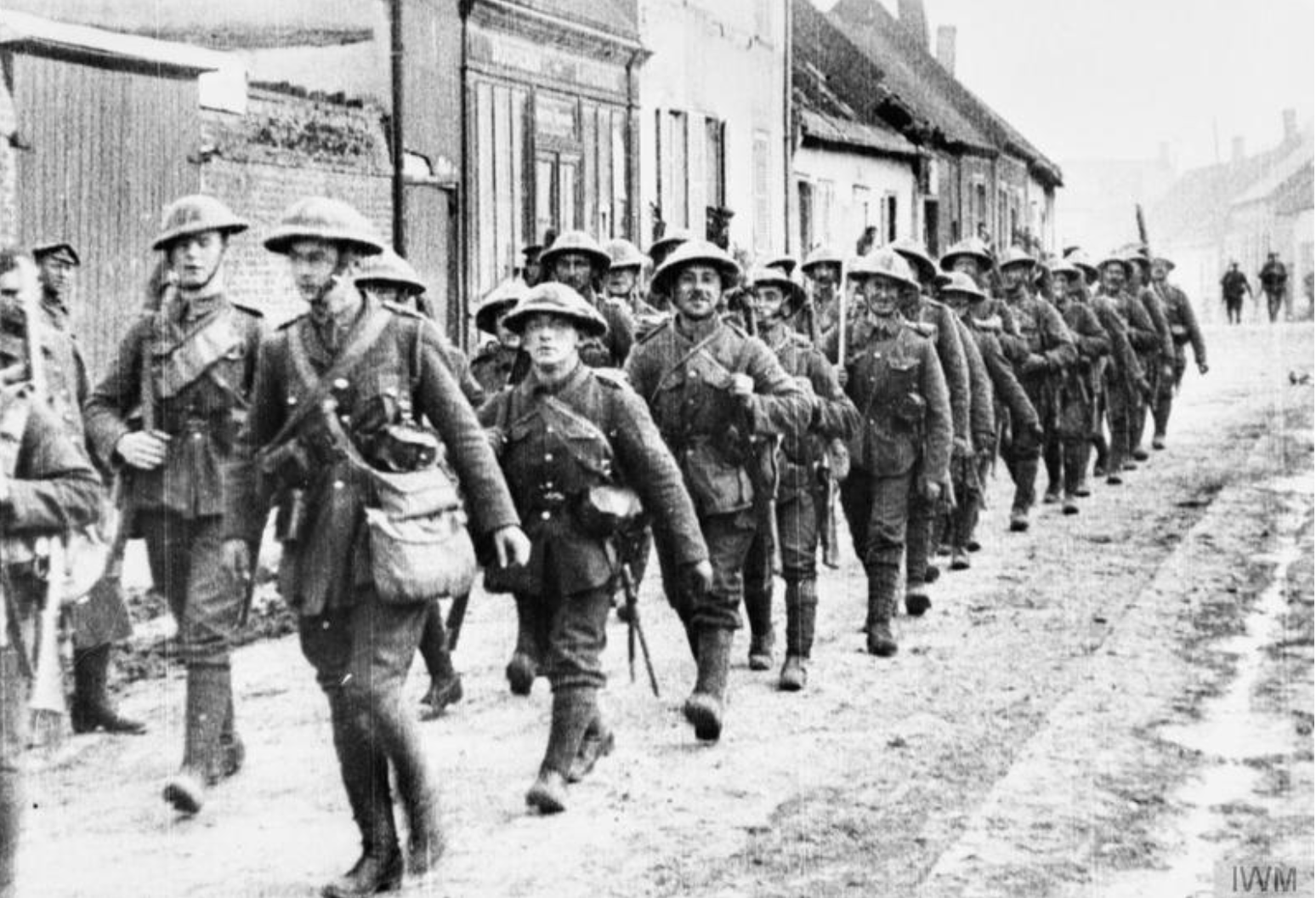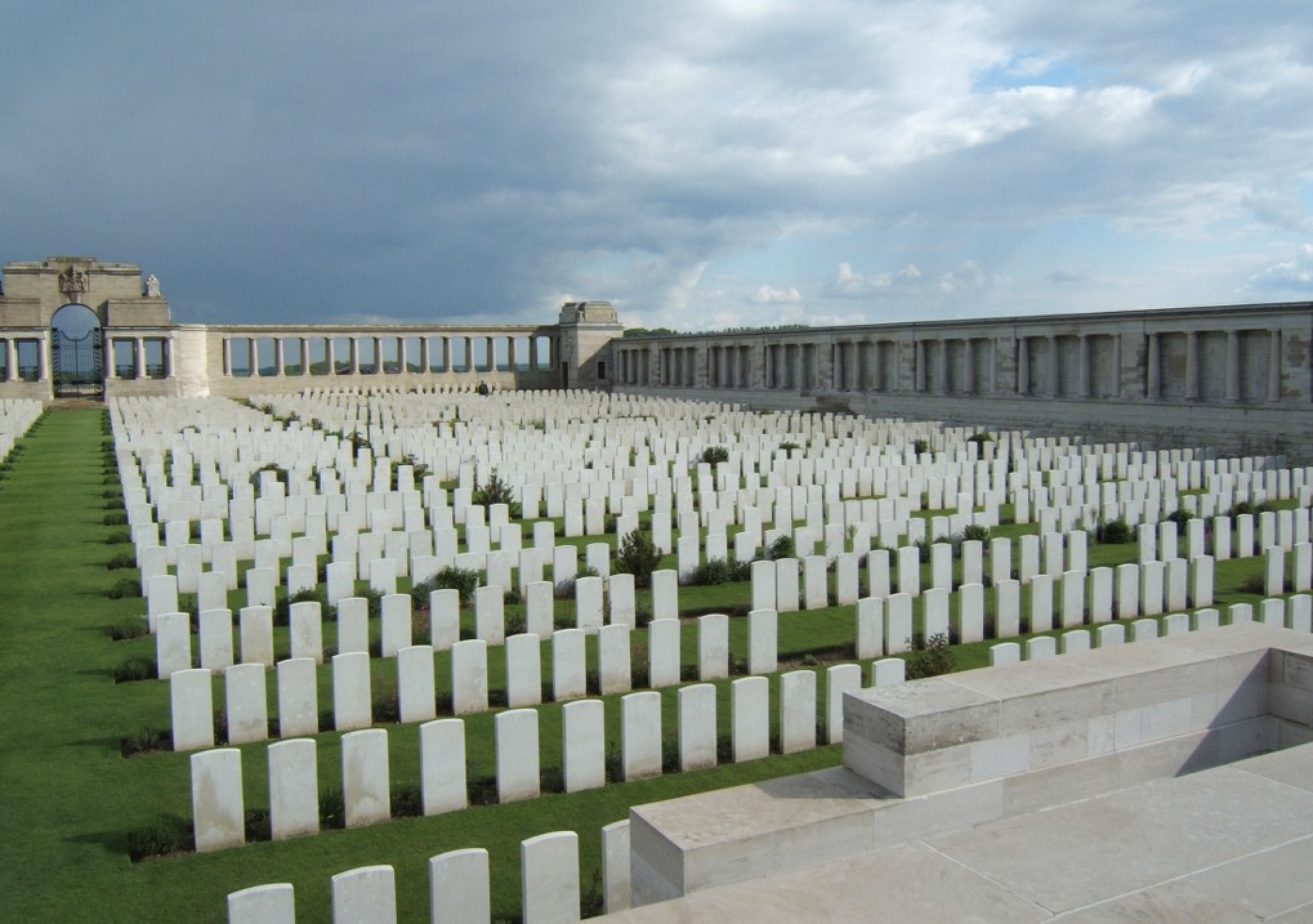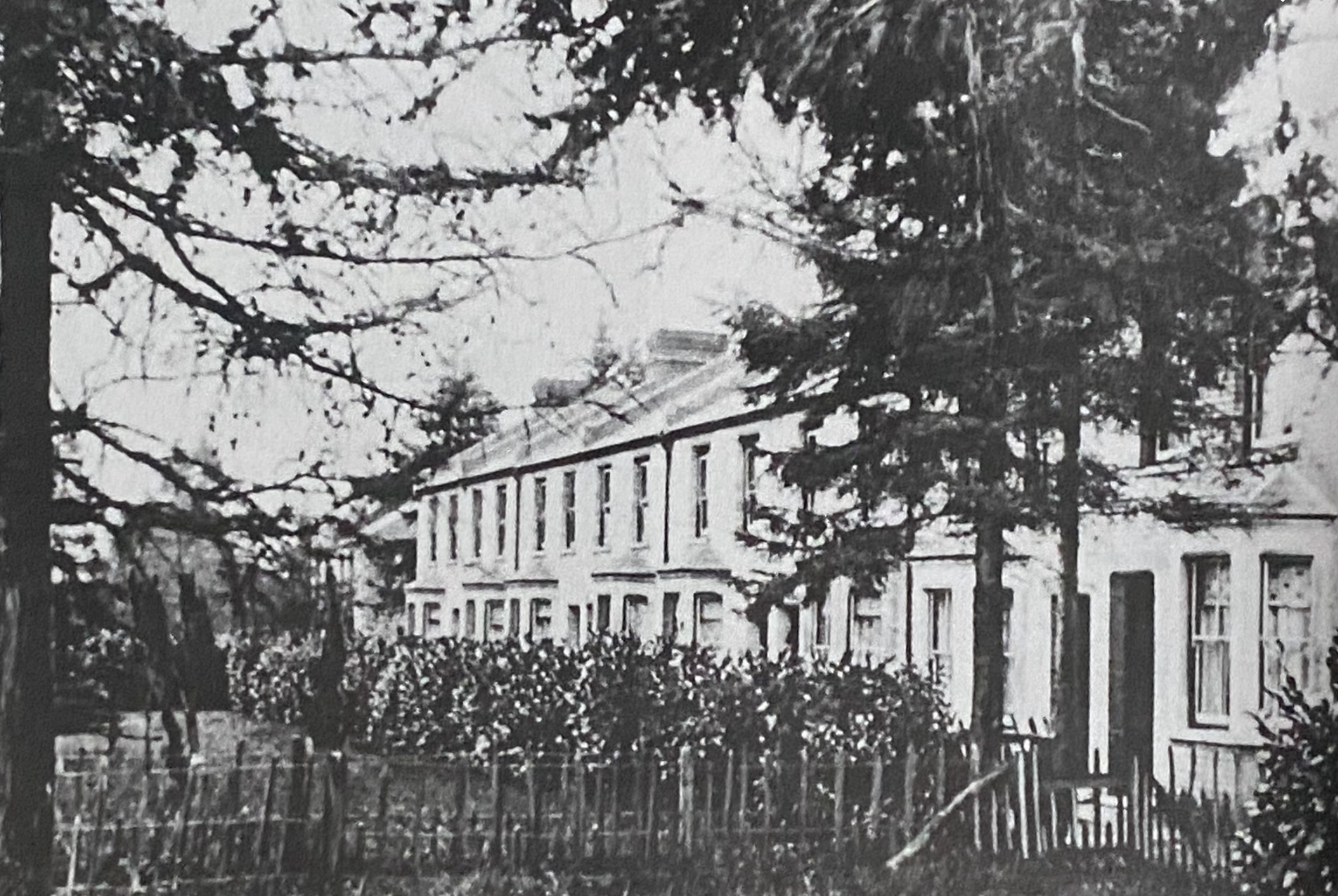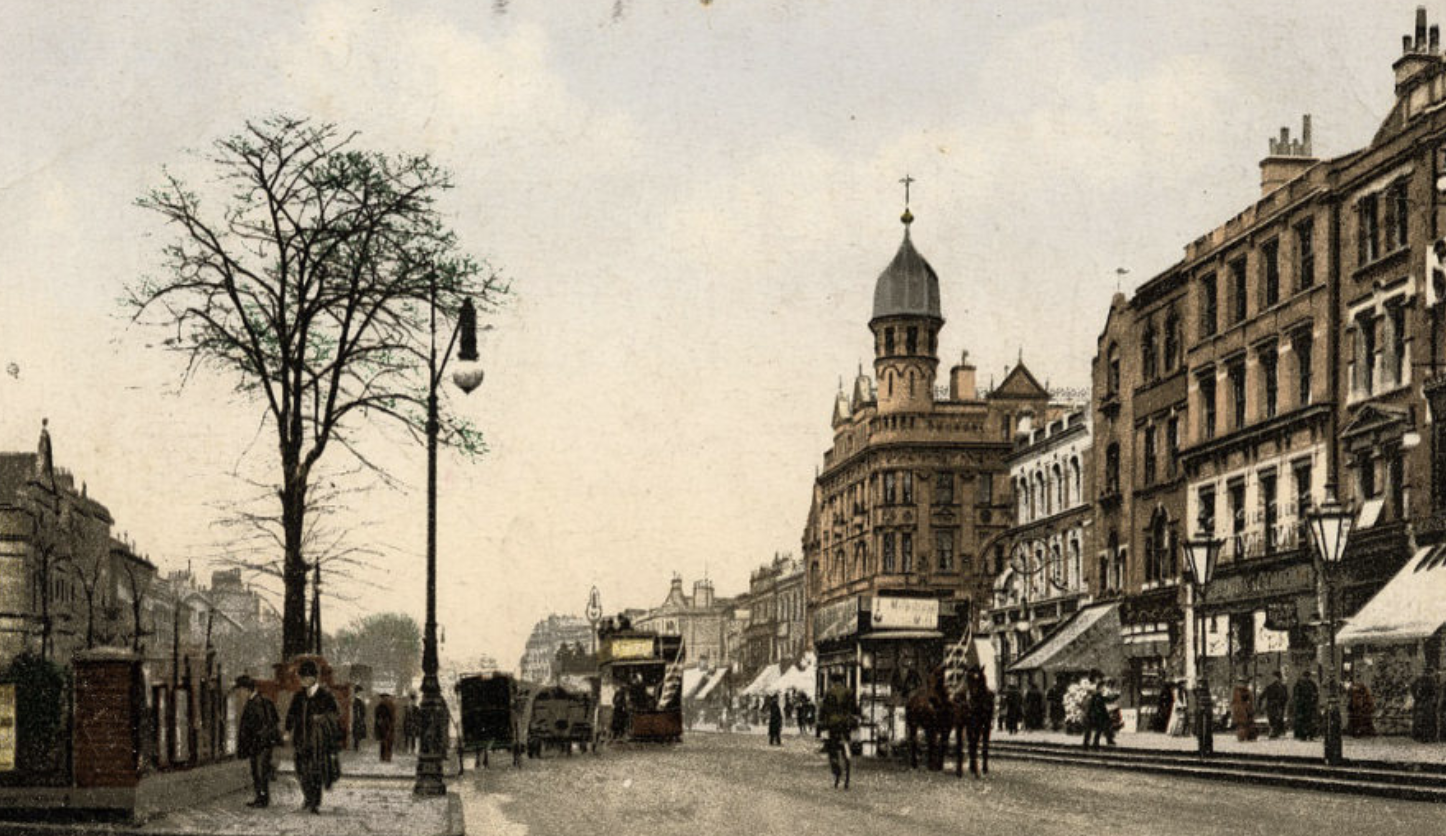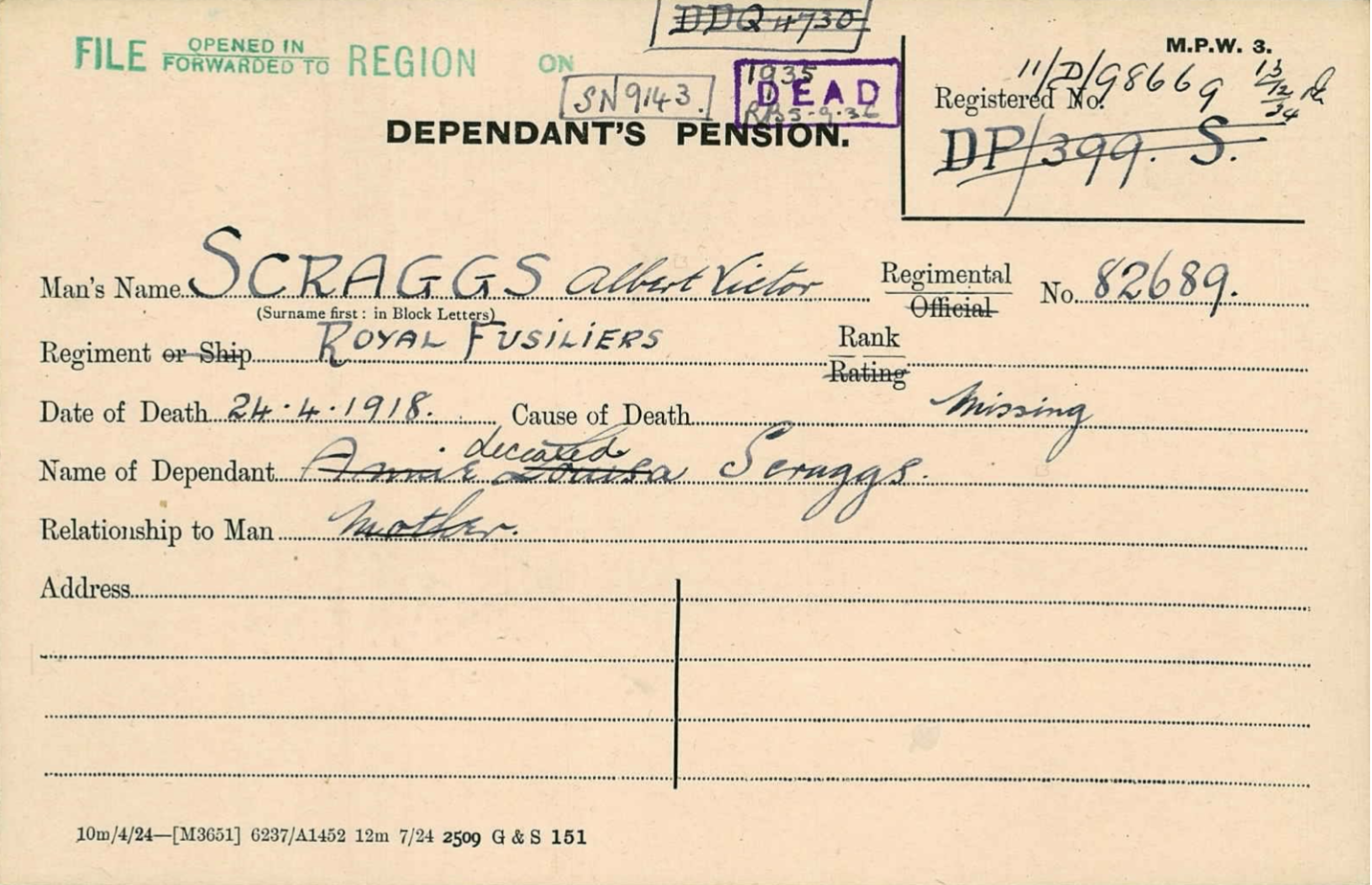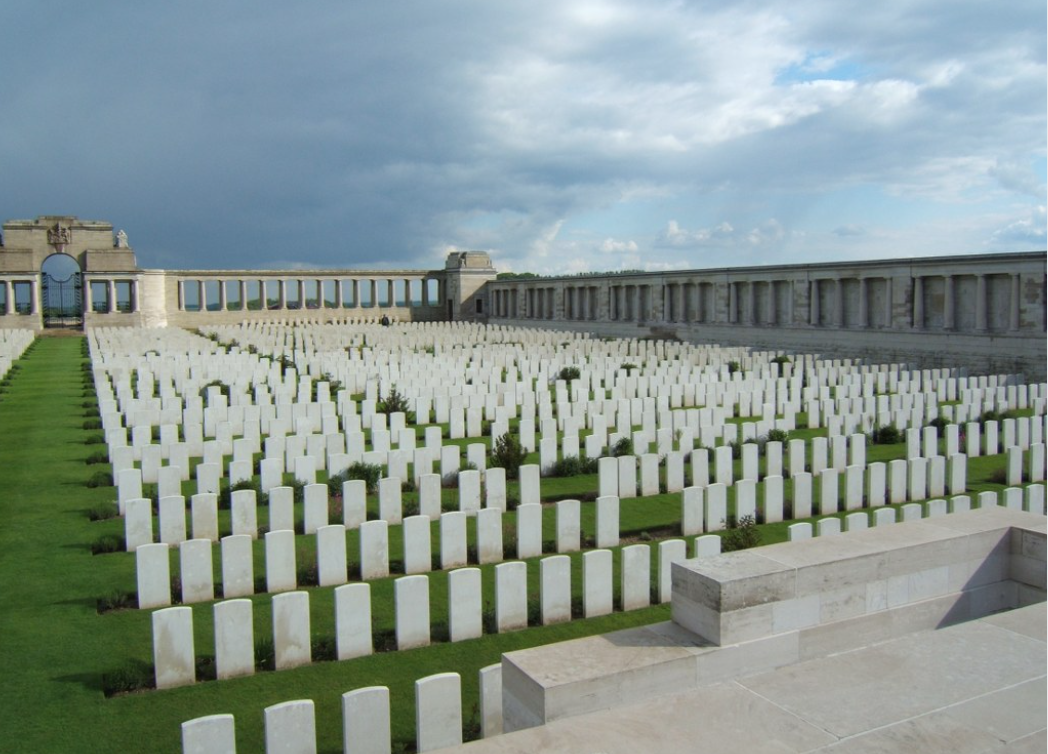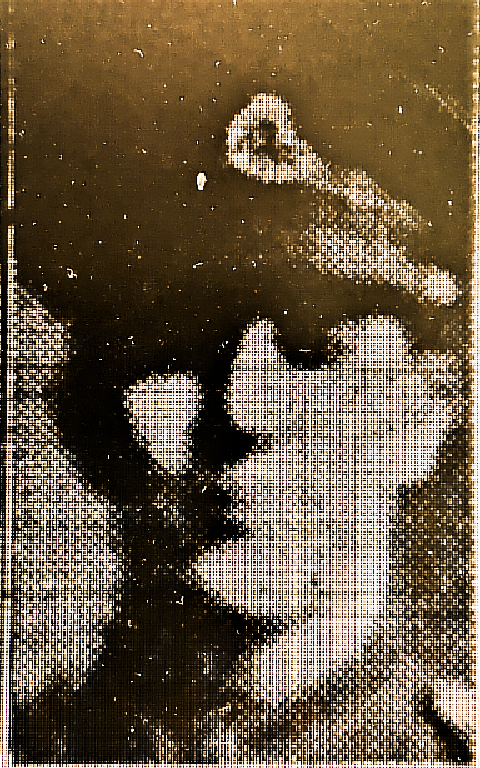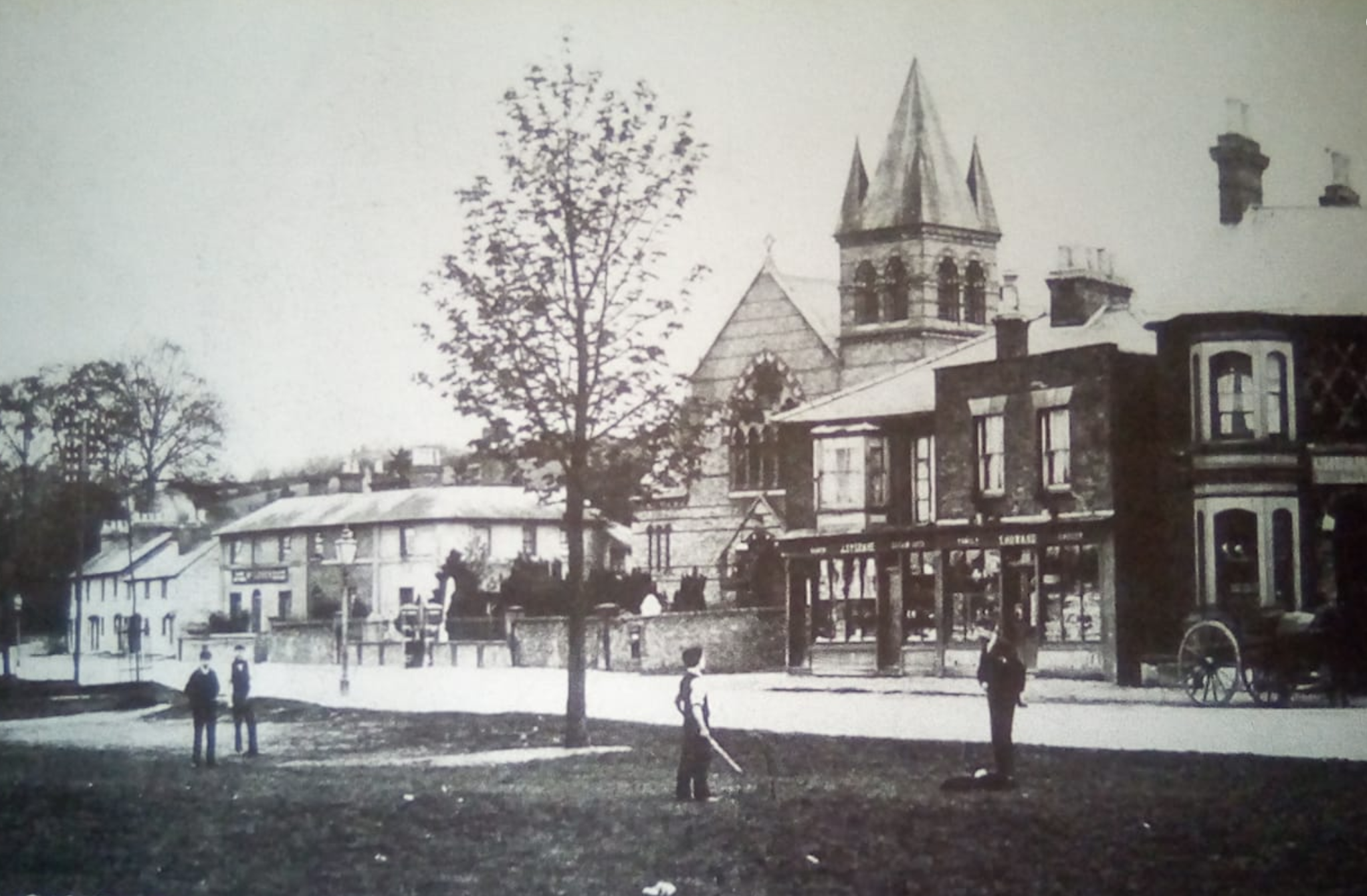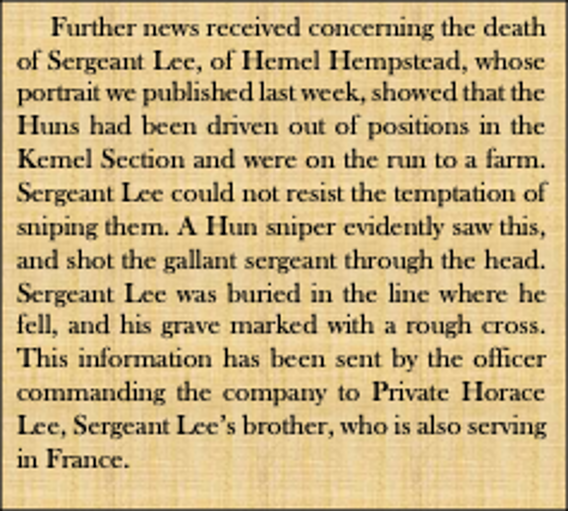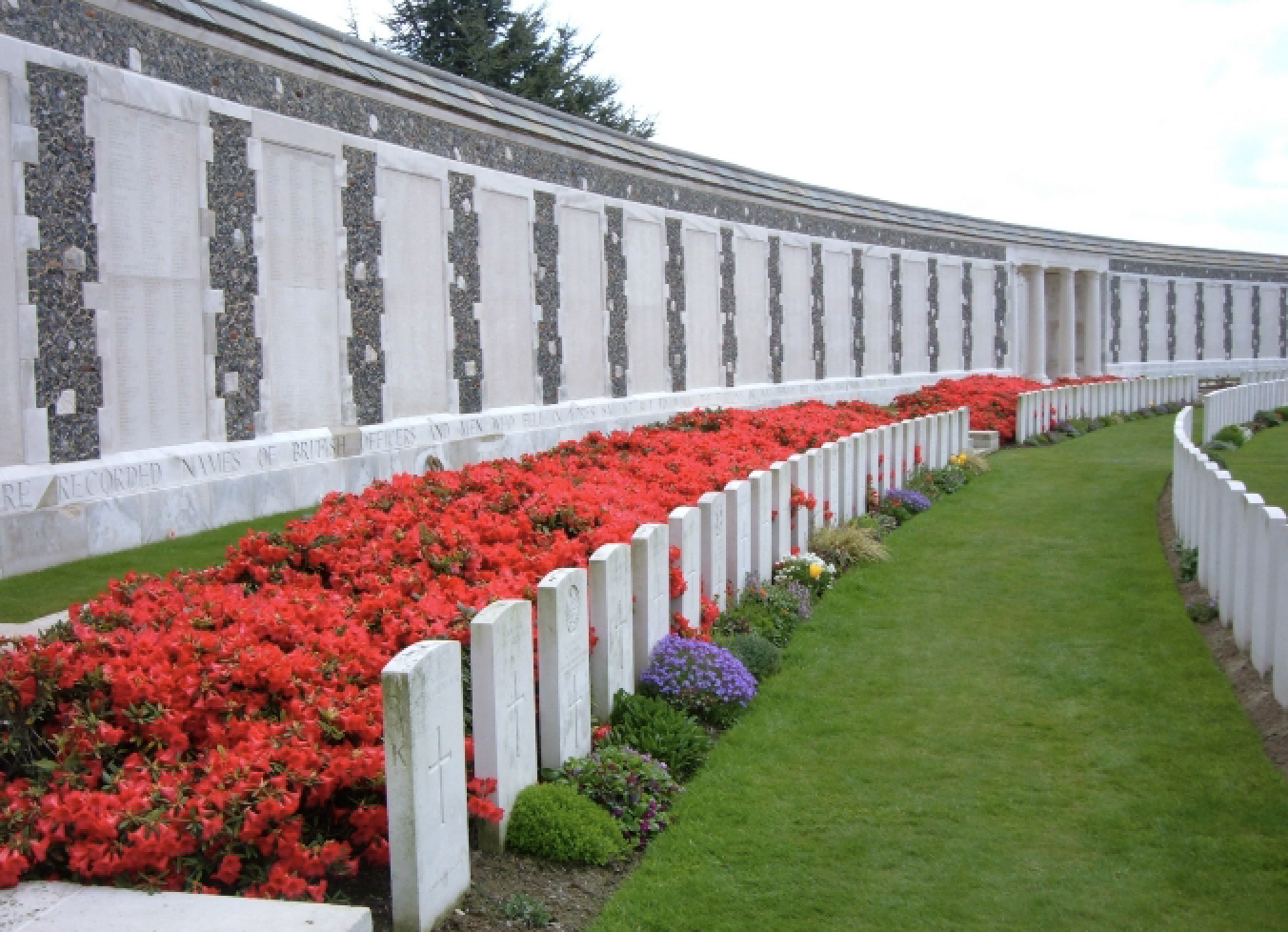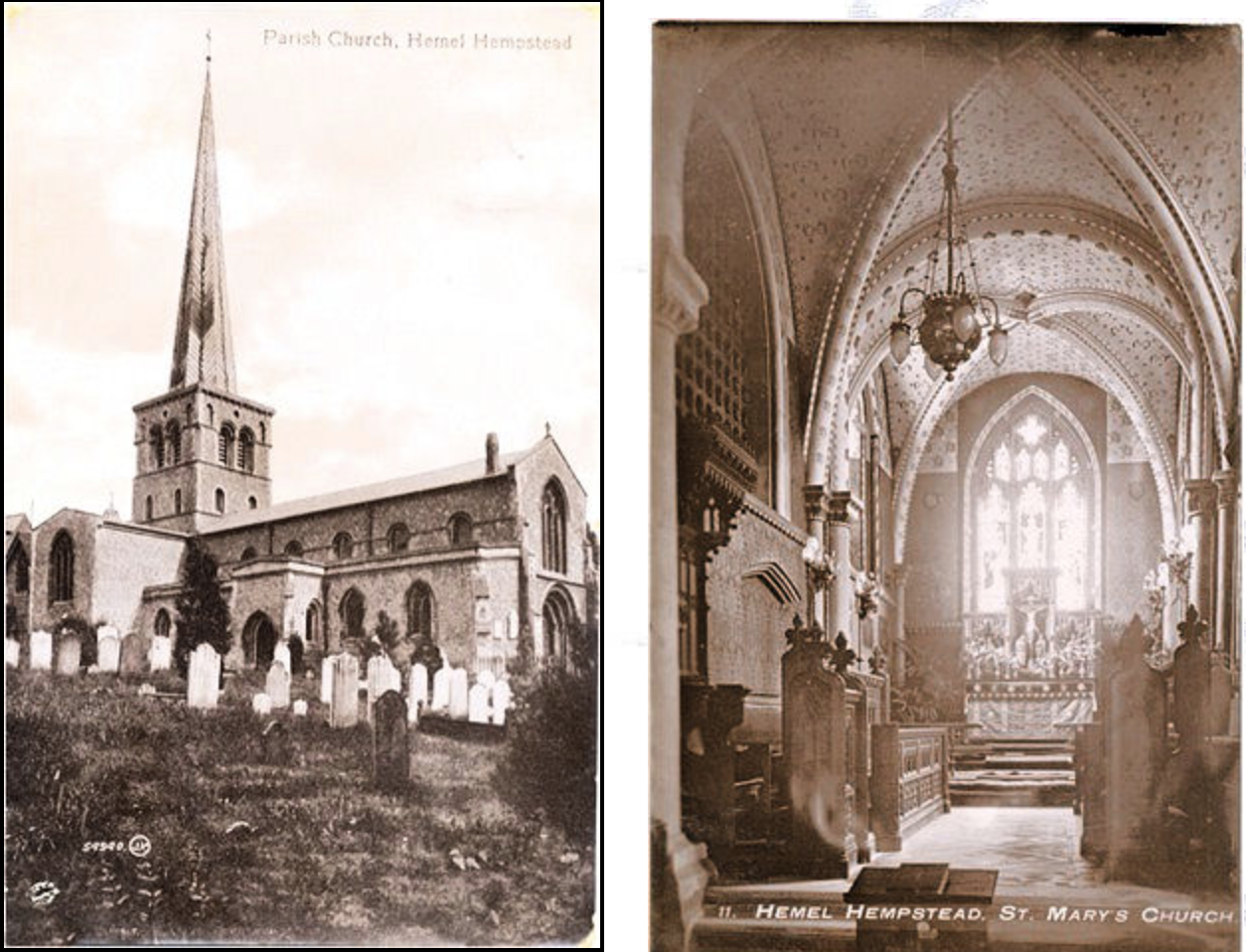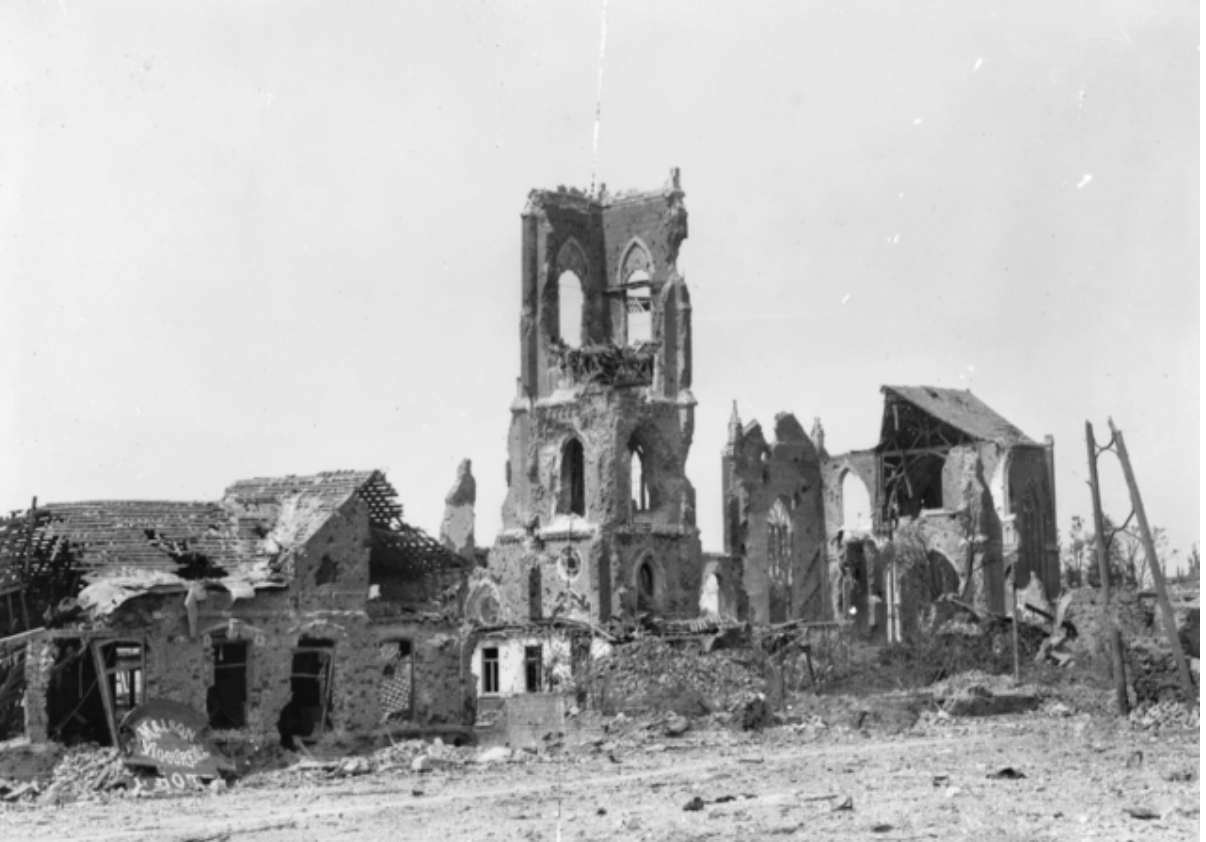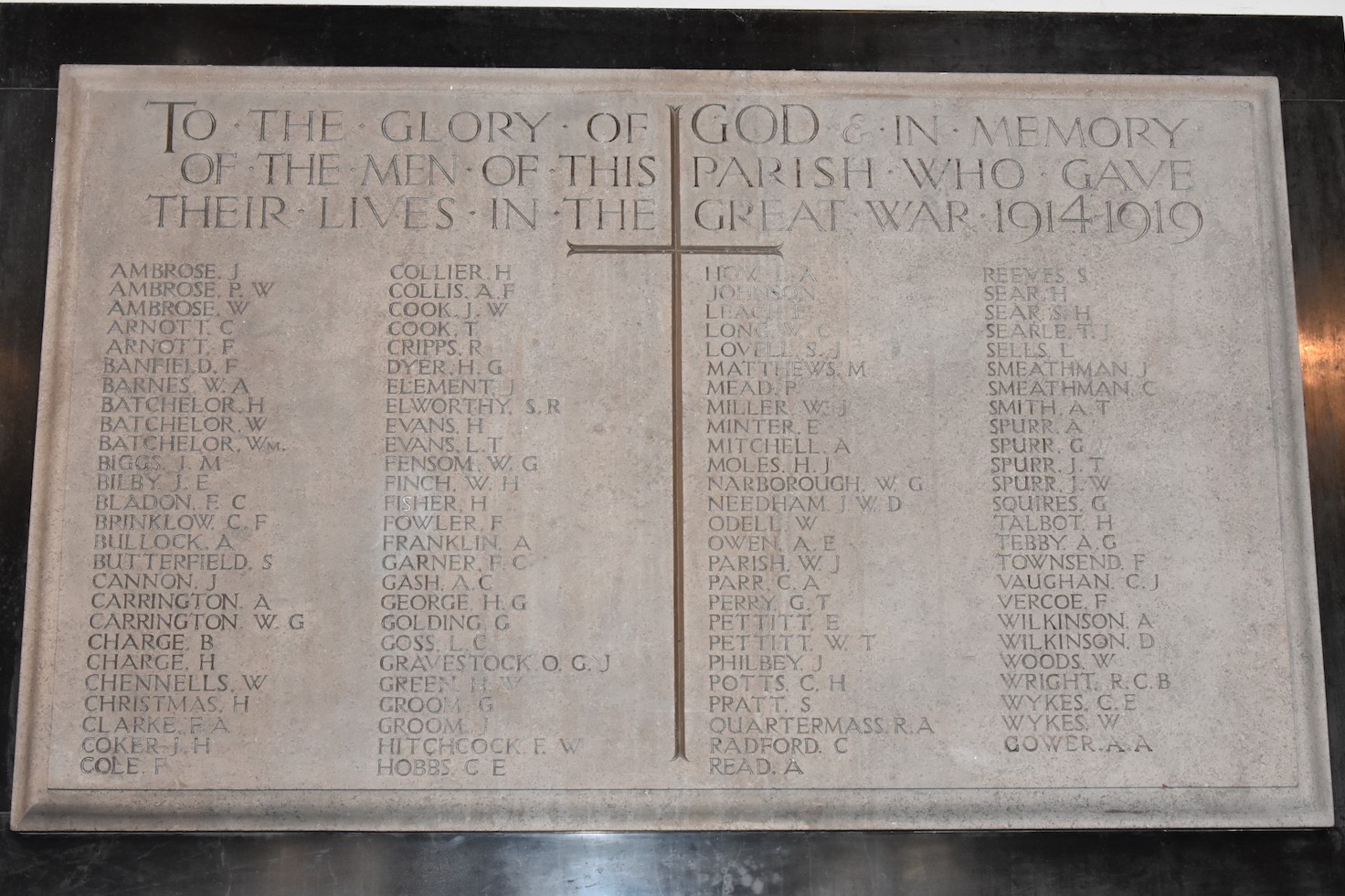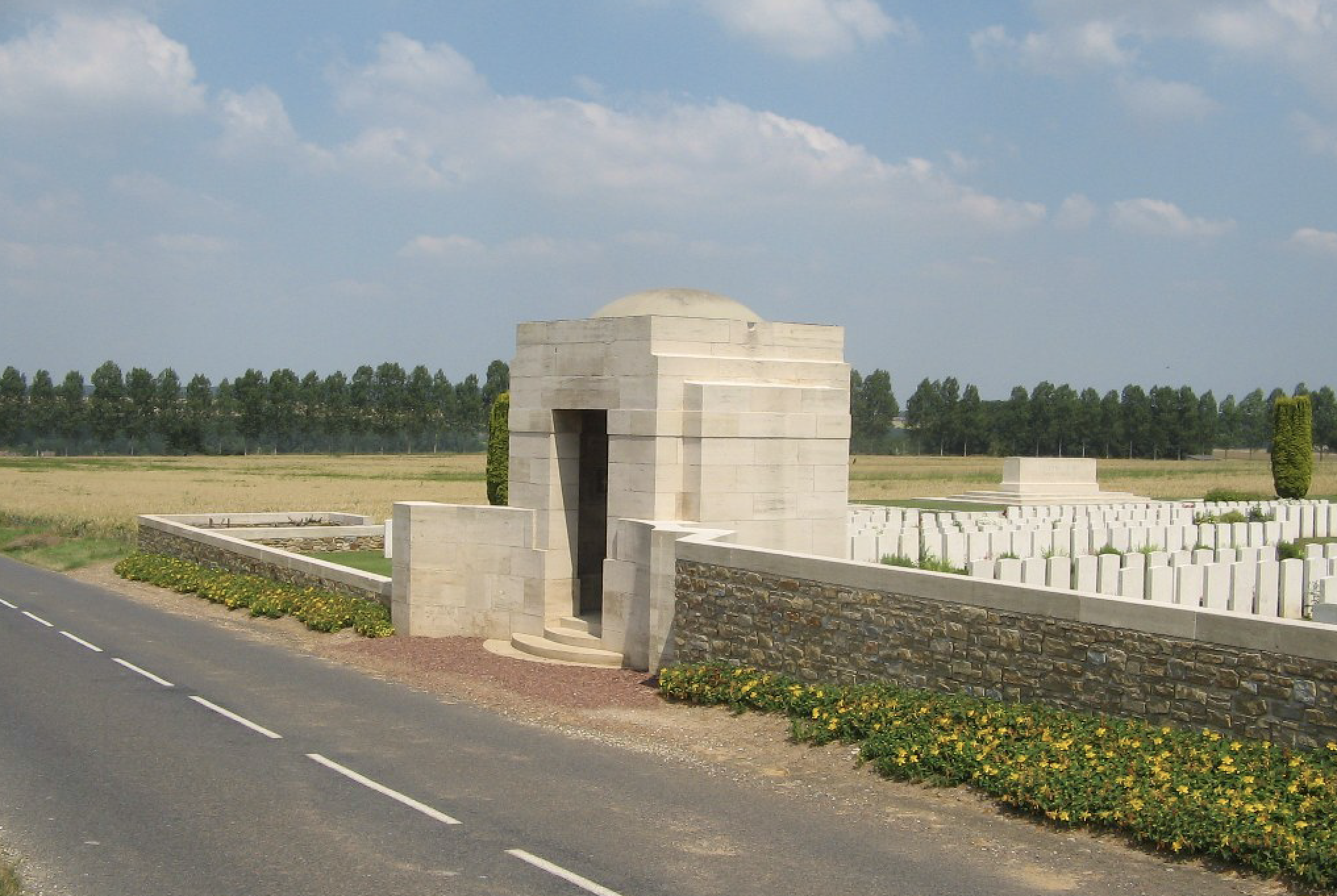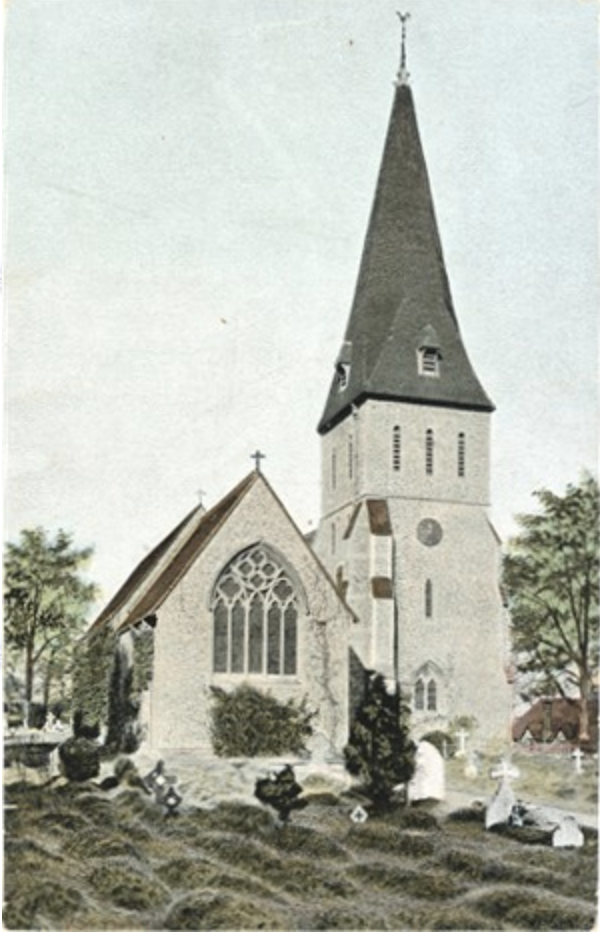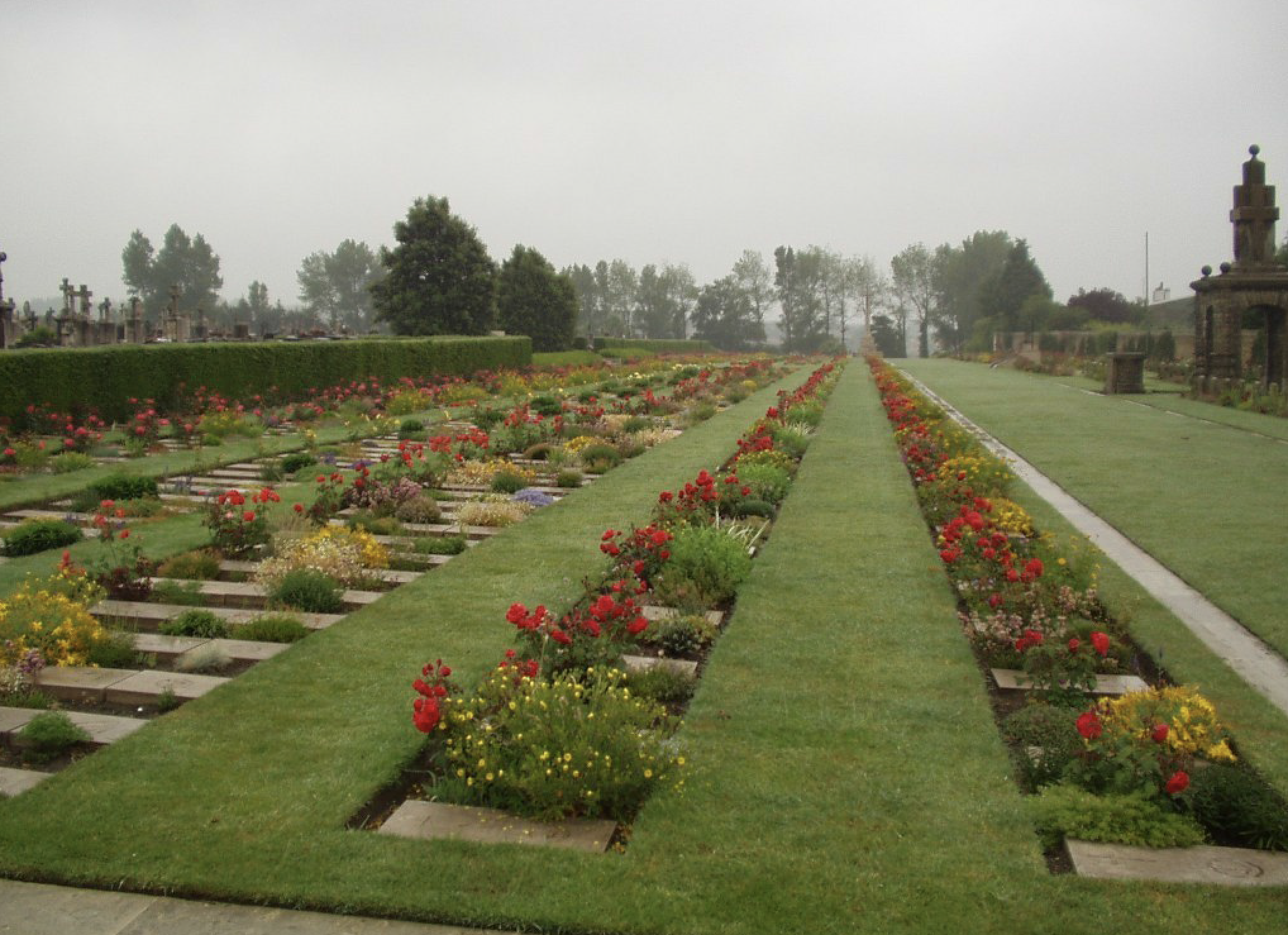Fallen in April 1918:
Leonard Greenhill
George Thomas Perry
William Hearn
Frank Sharp
Robert James Slough
James Henry Philbey
William Thomas Pettitt
William Edward Barber
Albert Charge
Cecil William Collings
Albert Victor Scraggs
Percy Lee
Sidney John Lovell
James Coleman
LEONARD GREENHILL
57565 Gunner
37th Siege Bty., Royal Garrison Artillery
Died of Wounds Monday, 1st April 1918
Remembered with Honour Haringhe (Bandaghem) Military Cemetery, West Vlaanderen, Belgium, Grave II. A. 20.
Leonard Greenhill was born in Hemel Hempstead, Hertfordshire on Tuesday, 30th April 1895, the tenth of eleven children born to William Greenhill and Maria Lucas. The children were: Frederick, Henry, Annie, Charles, Florence Annie, Charlotte Elizabeth, Annie Maria, George William, Walter Sidney, Leonard and Emily. Henry and Annie both died shortly after they were born, Charles died in 1882 aged three and Charlotte Elizabeth died in 1886 aged twelve.
His brother’s George and Walter both served in the Great War with the Royal Artillery and the Essex Regiment respectively. Both survived the conflict.
Leonard grew up in Chaulden, Hemel Hempstead, where his father William was a "Cattleman" and when he started school in 1900, it was in nearby Boxmoor JMI. He spent seven years at the school before leaving to take up work as a "Gardener", a job he still did when he volunteered. Of the thirty-two boys who went through school with Leonard, eight were to die in the Great War, more than a quarter, a common statistic in schools across the country.
On the outbreak of war Leonard volunteered almost immediately, when he attested at Hemel Hempstead and enlisted with the Royal Garrison Artillery (RGA), which was in the process of becoming a very important component of the British Army. The RGA significantly increased in size, especially the Heavy Batteries, which increased from thirty two Regular and Territorial Force batteries in 1914, to 117 by the end of the war.
Leonard was sent for basic training to No.1 Depot, Newhaven in November 1914. He was then posted to the 37th Siege Battery RGA at Lydd in Kent, where he was given more specialist training in using the 6 inch (30cwt) Howitzer.
The Siege Batteries like the 37th, increased from just three Regular batteries in 1914 to 401 and they were equipped with heavy calibre weapons, such as 6 inch, 8 inch or 9.2 inch howitzers, although some had huge railway or road-mounted 12 inch howitzers. As British artillery tactics developed, the Siege Batteries were most often employed in destroying or neutralising the enemy artillery, as well as putting destructive fire down on strongpoints, dumps, store, roads and railways behind enemy lines.
Leonard went overseas on the 15th December 1915, departing from Devonport and sailing for Egypt, where he disembarked at Port Said on the 29th December. The 37th Siege Battery spent only four months in the middle-east, following the allied withdrawal from Gallipoli, and it subsequently transferred to France, landing at Marseille in April 1916.
Leonard spent the next year around the Franco-Belgian border with his battery until December 1917, when the Royal Garrison Artillery was reorganised. The 37th Siege Battery transferred at that point, from the 79th Heavy Artillery Group, into the 59th Heavy Artillery Group of the II Corps.
A move to the Ypres Salient followed at the end of February 1918 and the Divisional War Diaries recorded two events which described briefly the experiences of the 37th Siege Battery. “22nd March 37th SB [Siege Battery] shelled again today. This battery has been shelled intermittently for the past three days.” This gives an indication that even well behind the front line the allied troops were not safe from enemy artillery.
Then, eight days later, the following was recorded: “37th SB shelled with aeroplane observation inflicting casualties. Battery pulled out at night and went into their alternate positions.” This diary entry gives an example of how the artillery from both sides made use of their nascent air forces, to observe the enemy and communicate positions, thus improving the accuracy of shelling.
It was during one of these attacks that Leonard was wounded and taken out of the line to 62nd Casualty Clearing Station (CCS) near Haringhe in Belgium. Sadly, he did not recover and died of his wounds on Monday, 1st April 1918.
62nd CCS was known as ‘Bandagehem’, which like ‘Dozinghem’ and ‘Mendinghem’, were the popular names given by the troops to groups of casualty clearing stations posted to this area. A good example of the kind of wry soldiers humour which prevailed during the horrors of the entire conflict.
He was commemorated on the War Memorial plaque in the church of St John the Evangelist, Boxmoor.
Leonard is Remembered with Honour in Haringhe (Bandaghem) Military Cemetery, West Vlaanderen, Belgium, where he is interred in Grave II. A. 20. The inscription on his headstone, requested by his father William, reads “ONE OF THE DEAREST, ONE OF THE BEST, GOD GRANT TO HIM ETERNAL REST”
He was 22 years old when he died.
Leonard was eligible for the 1914-15 Star, the British War Medal and the Allied Victory Medal.
6 inch (30cwt) Howitzer, used by the Siege Batteries of the RGA WW1 (Photo: Traquair Photography)
Siege Battery in action at the Somme in 1916 (Photo: http://www.ddoughty.com/ww1-artillery.html)
St John’s Church Memorial Plaque, Boxmoor (Photos: Traquair Photography)
Haringhe (Bandaghem) Military Cemetery, West Vlaanderen, Belgium (Photo: CWGC)
Gnr. Leonard Greenhill’s headstone (Photo: Traquair Photography)
GEORGE THOMAS PERRY
42490 Private
11th Bn., Essex Regiment
Killed in Action Thursday, 11th April 1918
Remembered with Honour Polygon Wood Cemetery, West Vlaanderen, Belgium, Grave H. 8.
George Thomas Perry was born in 1886 in Hemel Hempstead, Hertfordshire and baptised on Wednesday, 18th August in the same year. He was the fourth child of Samuel Perry and Eliza Cook and he had seven siblings who were: William, Walter Samuel, Ernest, all older and Ethel, Emma Sophia, Joseph James and Daniel.
When George was born his family lived in Kings Arms Yard behind the pub on the High Street.
When George left school in 1899, he went to work for John Dickinson & Co. Limited in Apsley Mills where he initially trained as a "Framemaker". He remained at Dickinsons until he went to war and by 1911, he worked as a "Paper Cutter" in Apsley Mills where he operated a guillotine.
George was a keen footballer and was known to many as the goalkeeper for Hemel Hempstead for a number of years.
He met Ethel Lane who also worked in Apsley Mills as a "Black Borderer" and they became sweethearts. Ethel had been born in 1886 in Piccott’s End not far from Chapel Street where George was born and grew up. Ethel had been raised in Boxmoor by her Grandparents and like George, joined Dickinsons as soon as she left school.
George and Ethel married on Sunday, 13th October 1907, at St Paul’s Church on Queen Street in Hemel Hempstead. George’s brother Walter was his Best Man and Ethel’s sister Millie was her Bridesmaid. The newlyweds both lived on Austin’s Place just off the High Street in Hemel Hempstead when they were married and soon afterwards moved into number 14 Chapel Street where they set up home.
Their first child Lilian Rhoda was born in 1908 and she was followed a year later by Marjorie Ethel. Both girls were baptised in nearby St Mary’s Church and Lilian alongside Eric Needham, the youngest son of Edgar Needham the proprietor of the Hemel Gazette who also lost his son Walter in the Great War.
George and Ethel’s first son Ernest was born in 1911, but tragically died almost immediately. Winifred came along in 1912, before Leonard arrived in 1914. Sadly Leonard died a year later before their last child Harold was born in 1916.
George volunteered under the Military Service Act when he attested at Hemel Hempstead in August 1916, enlisting with the Suffolk Regiment. He was immediately sent for basic training with the 3rd Battalion at Felixstowe and then sent overseas to join the 12th (Service) Battalion (East Anglian) Suffolk Regiment.
It is not known when he was posted but it was most likely around February or March 1917. However, on arriving at Base Camp in France he was transferred to the 11th Battalion Essex Regiment and joined his new unit at the Front as it was being rebuilt following heavy casualties from the previous year’s fighting.
George was in the trenches almost immediately upon arrival and in August fought at the Battle of Hill 70, near Lens, in support of the Canadian Divisions. For the rest of 1917 he saw action in the operations around Cambrai. Following this George was granted some home leave and returned to see his family and friends for what would prove to be the last time.
By early 1918 the 11th Essex, still in the Somme sector, fought over two weeks in the German Spring offensive, "Operation Michael" in and around St Quentin. This was followed immediately by action to the north near Bailleul in the Battle of the Lys, the Fourth Battle of Ypres.
On the 10th April the Battalion was in support at the Battle of Messines in the vicinity of "Polygon Wood" when the unit war diaries recorded that it “…sustained 3 or 4 casualties from one of a battery of our 6” howitzers which was shooting on our front and support line.” No other casualties were recorded over the next three days so it is most likely that George was one of the men from the howitzer battery injured.
George was recorded Killed in Action on Thursday, 11th April 1918.
His death was announced shortly afterwards in the Hemel Gazette which recorded that George and Ethel had five children, although only four of their children were living at the time of George’s death. (see extract)
He was commemorated on the John Dickinson & Co Limited War Memorial in Apsley End and on the War Memorial Plaque in St. Mary's Church on the High Street Hemel Hempstead where he had been baptised and worshipped.
George is Remembered with Honour in Polygon Wood Cemetery, West Vlaanderen, Belgium, where he is interred in Grave H. 8.
He was 32 years old when he died.
George was eligible for the British War Medal and the Allied Victory Medal.
Kings Arms Yard where George was born (Photo: Public Domain)
St. Paul's Church, Queen Street, Hemel Hempstead where George and Ethel married (Photo: http://www.hertfordshire-genealogy.co.uk)
Chapel Street, Hemel Hempstead where George and Ethel set up home (Photo: Public Domain)
Sanvic Camp near Le Havre, George's first stopping point in France (Photo: © IWM. Original Source: http://www.iwm.org.uk)
Polygon Wood in the Ypres Sector where George was killed (Photo: https://www.smh.com.au)
Extract from The Hertfordshire, Hemel Hempstead Gazette and West Herts Advertiser 27th Apr. 1918
Polygon Wood Cemetery, West Vlaanderen, Belgium (Photo: CWGC)
WILLIAM HEARN
76987 Private
1st/7th Bn., Durham Light Infantry
Killed in Action Saturday, 13th April 1918
Remembered with Honour Ploegsteert Memorial, Hainaut, Belgium, Panel 8 and 9
William Hearn was born in the Two Waters are of Apsley, Hertfordshire in March 1888 the fifth child of Joseph Hearn and Ethelinda Stringer. Joseph and Ethelinda had eight children together who were; George, Florence, Alice, Emma, William, Frederick, Ethelinda and the youngest Harold. His brother Frederick died aged nineteen in 1914.
The Hearn family lived on Weymouth Street in Apsley for many years and all the children grew up there and many, including William stayed on the street even when they left home and married. William started his working life as a "Stamper" when he left school in 1901, with John Dickinson & Co Limited in Apsley Mills. By the time of the 1911 Census he had moved to another job within the firm and worked as a "Sawyer", a skilled trade.
He met a girl from nearby Kings Langley in the Paper Mills and soon William and Annie Saunders became sweethearts. Annie lived with her younger sister at their Grandparents home on Langley Hill in Kings Langley, and she worked in the card packing department at Dickinsons.
William and Annie married on Wednesday, 25th August 1915 in Kings Langley and shortly afterwards, set up home at 27 Weymouth Street in Apsley. Both in their late twenties, the couple did not have any children and four months after their wedding, William went to join the Colours.
He enlisted under the Group (Derby) Scheme and joined the Royal Engineers and on the promise of future service he was assigned to Group 33 and transferred to the Army Reserve. At his enlistment in Hemel Hempstead, William was described as 5ft 5½ins in height, weighing 132lbs (9st 6oz) and of "good" physical development. The only adverse condition noted, was the state of his teeth which were described as "poor" and requiring treatment. This was not unusual at a time when dental care was basic at best and most people in society suffered from poor dental hygiene.
Indeed, almost 99% of all serving soldiers at one time or another had to be admitted to hospital due to dental problems. On a positive note however, today’s modern dental treatments and techniques are as a direct result of efforts to overcome these issues during the Great War, when the earliest developments were driven by the New Zealand specialist dental corps.
Under normal conditions, William would have been called up in April 1916 and mobilised the following month but, given his skilled trade as a "Sawyer", his occupation was "starred" (reserved in World War II). It seems likely that an appeal was lodged with the local tribunal on his behalf by his employer who, as the war progressed, became more cautious in releasing skilled employees, and often succeeded in extensions for call up or in some cases complete exemption from service.
Whatever the reason, William was finally mobilised at Watford on the 25th August 1916 as a Sapper in the Royal Engineers and was posted initially to Chatham. Eleven days later on the 5th September 1916 he was sent to hospital to undergo dental treatment and by the 1st October he was back with his unit.
For the next year he served on the home front as a Sapper until in September 1917, he was transferred to reinforce the Durham Light Infantry (DLI). William was initially posted to the 11th Battalion DLI but a few days later he was transferred to the 7th Battalion (Pioneers) and sent overseas, disembarking in France on the 21st September 1917 and joined his new unit the following day as part of a draft of 210 Royal Engineers.
Pioneer battalions were the forerunners of the Labour Corps and were made up of men capable of fighting but who were normally engaged in labouring work. As soon as William arrived, he was put to work as the Battalion engaged in trench works and road improvements as well as the dangerous task of wire laying in front of the Hindenburg Line.
This worked continued, often in close range of enemy shelling and air attacks, until in February 1918 the Battalion switched to fighting mode as the Germans launched "Operation Michael". By the 12th April the 7th DLI where at La Motte where it occupied out house in a nearby Chateau. The Battalion war diaries recorded the following: "13th About 5.0AM the CHATEAU was heavily shelled for quarter of an hour resulting in several N.C.O.s + men being killed and wounded. The Bn were withdrawn to billets…”
William was one of the unfortunate men killed and he died on Saturday, 18th April 1918.
He was initially reported ‘Missing’ on 13th April 1918 and Annie was informed as such by the War Office. This began two years of correspondence between her and the War Office seeking pension entitlement and confirmation of her husband’s fate. At one point in March 1917, John Dickinson & Co Limited wrote on her behalf requesting documents or information regarding William’s presumed death so that she could settle insurance claims. The response from the War Office confirmed that no firm information was available and indeed, the pension she had been granted was temporary only and could be cancelled should William turn up, even though the respondent noted that this was highly unlikely.
It was not until October 1919 that Annie finally received official confirmation of William’s death when she at last obtained his effects, his war gratuity payment and confirmation of her pension entitlement. This was a common experience for many of the families left behind after a soldier had been killed.
William was commemorated on the John Dickinson & Co Limited War Memorial at Apsley End where he had worked for fifteen years.
Research suggests that William has the unique honour of being recorded on the Hemel Hempstead War Memorial three times, albeit mistakenly. As well as his own name, two others William Kearn and W Fearn are listed, the former was recorded living at the same address as William in Weymouth Street when the initial Roll of Honour was published in the Gazette in 1919. There is no record of this individual in Hemel Hempstead at the time and no military records exist, so it appears to be an incorrect inscription. The same applies to the latter name, W Fearn for which no records have come to light so again this would appear to be an incorrect recording of William's name.
Two Waters Road, Hemel Hempstead where William was born (Photo: Public Domain)
All Saints Church, Kings Langley where William and Annie married in 1915 (Photo: http://www.hertfordshire-genealogy.co.uk)
Weymouth Street, Apsley in 1898 where the Hearn family lived and where William and Annie set up home (Photo: Public Domain)
11th Durham Light Infantry Pioneer Battalion just before the Battle of Ypres in 1917 (Photo: http://www.royalpioneercorps.co.uk)
Pioneers road laying near Chateau Wood in 1917 (Photo: http://www.royalpioneercorps.co.uk)
Ploegsteert Memorial, Hainaut, Belgium (Photo: CWGC)
William is Remembered with Honour on Ploegsteert Memorial, Hainaut, Belgium, Panel 8 and 9.
He was 30 years old when he died.
William was eligible for the British War Medal and the Allied Victory Medal.
FRANK SHARP
43942 Private
2nd Bn., Lincolnshire Regiment
Killed in Action Sunday, 14th April 1918
Remembered with Honour Tyne Cot Memorial, West-Vlaanderen, Belgium, Panel 35 to 37
Frank Sharp was born on Wednesday, 2nd November 1898 in Boxmoor, Hertfordshire to James Frederick Sharp and Ellen Hosier. Frank had an older sister Florence May, an older brother Fred (Frederick) and two younger sisters Nellie (Ellen) Rose and Elsie Evelyn.
His brother Fred fought and died almost three years to the day before him in April 1915. Fred’s biography also appears ion this site.
The Sharp family lived at 43 Puller Road, Boxmoor when Frank was born, and his father worked as a Sawyer at nearby Foster’s Sawmills. By 1911 the family had moved straight across the street to 30 Puller Road and twelve-year old Fred was in his final year at Boxmoor JMI school. He left on the 9th January the following year and went straight to work in the Book Binding Department at John Dickinson & Co Limited in Apsley where his older brother Fred also worked.
His father was by now a Jobbing Gardner and his older sister May was listed as "Father’s Housekeeper" whilst his mother was not present on the day of the Census. By the time Frank joined the Colours his family had moved again, this time to 59 St John’s Road in Boxmoor and would later leave the area entirely and move to Coulsdon near Croydon in Surrey.
Frank left Dickinsons a few months after his eighteenth birthday in March 1917, and went to Watford where he attested and joined an infantry battalion of the Training Reserve. By this time the Training Reserve was often used to process the large numbers of men enlisting as conscripts following the Military Services Acts of 1916.
It was no longer the case that men could select the Regiment they wished to join, as the high casualty rates from the war meant that the War Office determined which units were in most need of reinforcement. As a result Frank was posted to the Lincolnshire Regiment and sent to France to join the 2nd Battalion.
He joined his unit in late 1917 just at it was about to transfer to the 62nd Brigade in the 21st Division. Frank found himself in the Somme Sector in February 1918 as defensive preparations were underway and the German Spring Offensive began.
He fought throughout March in the Battles of St Quentin, Rosières and Bapaume before the 2nd Lincolnshires entrained for positions south of Ypres on the 1st April. Almost immediately, Frank was in the frontline trenches again as the Battle of the Lys began and, on the 11th April, he was wounded near Wytschaete and taken down the line. Frank clung on to life for three days before he finally succumbed to his wounds.
He died on Sunday, 14th April 1918 having been at the Front for only four months.
The Battalion Chaplain wrote to his parents in February 1919 to inform them of Frank’s end, a report of which was published in the Hemel Gazette. (see extract)
The loss must have been great indeed for his parents James and Ellen, who had now given their two sons, both aged only nineteen, to the cause of freedom. As with many of the soldiers buried by their comrades, Frank’s grave was subsequently lost when further fighting took place in the vicinity.
He was commemorated on the John Dickinson & Co Limited War Memorial at Apsley End where he had worked before going to war.
Frank is Remembered with Honour on Tyne Cot Memorial, West-Vlaanderen, Belgium, Panel 35 to 37.
He was only 19 years old when he died.
Frank was eligible for the British War Medal and the Allied Victory Medal.
Puller Road, Boxmoor (centre) where Frank was born and grew up (Photo: https://www.britainfromabove.org.uk ©English Heritage)
Boxmoor JMI School (Image: https://www.peterwagonfinearts.co.uk/)
Apsley Paper Mills where Frank worked (Photo: http://www.hertfordshire-genealogy.co.uk)
Extract from The Hertfordshire, Hemel Hempstead Gazette and West Herts Advertiser 8th Feb. 1919
Tyne Cot Memorial West-Vlaanderen, Belgium (Photo: CWGC)
ROBERT JAMES SLOUGH
56506 Private
6th Labour Coy., Devonshire Regiment
Killed in Action Monday, 15th April 1918
Remembered with Honour, St. Pierre Cemetery, Amiens, Somme, France Grave: XVI. E. 4.
Robert James Slough was born in St Albans, Hertfordshire in 1881 and baptised at St Peter’s Church in the town, on Sunday, 30th October in the same year. He was the fourth child of Harry (Henry) Isaac Slough and Emily Payne who had a large family of thirteen children together. The children were: Julia, Ethel, Harry (Henry), Robert, Margaret, Arthur, Beatrice, Richard, Albert Joseph, Edward, Gertrude, Andrew and the youngest Hilda.
Robert’s brothers Albert, Edward and Andrew also fought in the Great War. Edward survived the conflict, but Albert was killed in France in 1916 just six weeks before Andrew’s death. Their biographies are also on this site.
Robert’s father Harry, a "Machine Fitter", brought the family to Boxmoor in 1885 when he started a job at John Dickinson & Co. Limited. The family lived on the London Road in the Two Waters area of Boxmoor.
In 1901, Robert’s brother Richard died aged eleven and five years later in 1906, tragedy once more overtook the family when his mother Emily died aged fifty-two. When he left school Robert went to work at John Dickinson & Co Limited in Apsley Mills where he was apprenticed as a "Stereotyper" in the Printing Department. By 1911 he had left Dickinsons and moved to Reading where he was employed by Cox & Wyman, the oldest established printing company in the country. He lived at 47 Vastern Road a short walk from his place of employment and it was from here that he went to enlist in January 1917.
Robert joined the Army under the Military Services Act when he was aged thirty-five and he enlisted with the 6th Infantry Labour Company in the Devonshire Regiment. A few months later in April 1917, Army Council Instruction 611 gave definition to the newly formed Labour Corps and the 6th Infantry Labour Company Devonshire Regiment became 171st Company Labour Corps.
It has proved difficult to determine where Robert served and how his war progressed other than knowing that in early 1918, he was in the Amiens area of France. Between March and April, battles ranged from the Somme sector, north to Hazebrouck and Bailleul and it was during this period that Robert was killed.
The exact circumstances of his death are not known other than that he fell on Monday, 15th April 1918 and this may have been at Hazebrouck or Bailleul, or more likely further south and closer to Amiens.
Robert’s death was the third such tragedy to befall the Slough family following the deaths of two of his younger brothers Albert and Andrew in 1916. No other family from the town suffered the loss of three of its sons during the conflict.
Robert and both his brothers are commemorated on the war memorial plaque in St John the Evangelist Church in Boxmoor where they had lived and grown up.
Robert is Remembered with Honour in the St. Pierre Cemetery, Amiens, Somme, France Grave: XVI. E. 4. The inscription on his headstone, requested by his father Henry, reads: “UNTIL THE MORNING BREAKS AND SHADOWS FLEE AWAY”
He was 36 years old when he died.
Robert was entitled to the British War Medal and the Allied Victory Medal.
St. Peter's, St. Albans where Robert was baptised (Photo: http://www.hertfordshire-genealogy.co.uk)
Cox & Wyman Printworks, Reading where Robert worked (Photo: https://www.britainfromabove.org.uk ©English Heritage)
St. Pierre Cemetery, Amiens, Somme, France (Photo: CWGC)
JAMES HENRY PHILBEY
72419 Private
16th Bn., Sherwood Foresters (Notts and Derby Regiment)
Killed in Action Tuesday, 16th April 1918
Remembered with Honour, Pozieres Memorial, Somme, France Panel 52 to 54.
James Henry Philbey was born in Hemel Hempstead, Hertfordshire on Wednesday, 6th May 1884 and he was baptised on 9th April 1893 aged nine, along with his younger brother William Charles. He was the son of Edward Philbey and Mary Ann Bailey who had three children together, James Henry, Lucy Jane and William Charles. Lucy sadly died in 1904 aged only sixteen.
His brother William also fought in the Great War with the Hertfordshire Regiment and survived the conflict.
When James left school in 1897, he followed his father Edward into the building trade and was apprenticed as a "Bricklayer". He met a local girl from nearby Piccott’s End, Caroline Raggett, who worked in Apsley Mills. They became sweethearts and were married on 27th October 1906. The set up home at number 1 Astley Road and almost a year to the day following their marriage, their first child Sydney George was born. Two daughters followed: Lucy May in August 1909 and Constance Annie in February 1914.
James joined the Colours under the Group (Derby) Scheme and on the promise of service at his attestation, he was transferred to the Army reserve. James was due for call up in April 1916, but instead he went to London to enlist at Whitehall on the 14th January 1916 and joined the Royal Flying Corps (RFC).
On his entry to the RFC, he stood 5 feet 8¼ inches tall, weighed 138 lbs (9st 12lbs) and was described as having "Good" physical development. He was immediately posted to Farnborough as an Air Mechanic 2nd Class and after a relatively short period of training he was sent to France on the 19th March 1916 to join his unit.
James was assigned to a Balloon Section and on the 1st July, he was promoted Air Mechanic 1st Class. He spent the next year with his section, which was engaged in deploying Observation Balloons over enemy territory, until in early September 1917 James was sent for infantry training with the 63rd Royal Naval Division.
This was followed by a compulsory transfer at the end of the month to his new unit, the 16th (Chatsworth) Battalion Sherwood Foresters (Notts and Derby Regiment). He joined his new unit on the 7th October as part of a draft of 100 men and shortly afterwards, James was granted two weeks home leave on the 1st November when he returned to Hemel Hempstead to see his wife and children. This would prove to be the last time they would see James alive.
On his return to the Front, James moved with the Battalion into the Somme Sector and it was here in late March 1918 that he experienced his first serious action at the Battle of St Quentin. The Sherwood Foresters suffered 317 casualties in ten days of fighting and with little time to recover, went into action again at the Battle of the Lys in April.
The outcome of this action devastated the Battalion to the extent that it was reduced to cadre strength along with the whole 39th Division and spent the rest of the war supervising instruction courses for American troops.
It was during the fierce fighting in April that James fell near Amiens. He was Killed in Action on Tuesday, 16th April 1918.
Following James’ death, Caroline was awarded a widow’s pension in 1918 totalling 29s 7d per week. This included 5s 3d for each of the three children until the age of sixteen. This equates to approximately £83 per week in today’s money.
Caroline never remarried and she died in 1965 aged eighty-four at the home of their son Sydney who, like his father and grandfather, had been a "Bricklayer" for the whole of his working life.
James is Remembered with Honour on the Pozieres Memorial, Somme, France Panel 52 to 54.
He was 33 years old when he died.
James was entitled to the British War Medal and the Allied Victory Medal.
Bury Road, Hemel Hemsptead c1950 almost unchanged since James had grown up here fifty years earlier (Photo: Bernard Henderson, source eBay)
The Farnborough Aircraft Establishment in 1911 where James trained with the RFC (Photo: https://www.airshipsonline.com)
RFC Observation Balloon 1917 (Photo: Public Domain)
German Troops marching through St. Quentin, March 1918 (Photo: Public Domain)
St. Pierre Cemetery and Memorial, Somme, France (Photo: CWGC)
WILLIAM THOMAS PETTITT
Second Lieutenant
1st Bn., The Loyal North Lancashire Regiment
Killed in Action Friday, 19th April 1918
Remembered with Honour, Vieille-Chapelle New Military Cemetery, Lacouture, Pas-de-Calais, France Grave III. D. 10.
William Thomas Pettitt was born on Monday, 27th June 1887 in Nash Mills, Hertfordshire. He was the seventh of eight children and the second son of William John Pettitt and Elizabeth Coles. The children were: Mary Ann, Elizabeth, Ada Louise, George, Edith, Emily, William Thomas and Beatrice Amy. His brother George also fought in the Great War and survived the conflict.
William’s father, William senior, was a "Steam Engine Fitter" and had moved frequently with his job, resulting in his children being born in Northampton, Wellingborough, Apsley End and Croxley Green, before he settled his family in Hemel Hempstead. He worked with John Dickinson & Co. Limited, first at Croxley Mills before moving to Apsley Mills where four of his children would also work.
When William started school aged five in 1892 the family were living at Bulbourne. He went to Tring New Mill JMI School along with his sister Edith and Emily in April, but by December they all left as his father moved the family back to Hemel Hempstead and 15 Corner Hall. William now joined Apsley Boys School and his natural abilities were soon recognised by his teachers.
In 1899 the school attendance log recorded the following: “Dec 4th – William Pettitt - a Sixth Standard boy – has assisted me as temporary monitor today, and will continue to do so (with the permission of H.M.I) to the end of the school year at least.” Permission was granted by the school inspector and William continued as a monitor throughout his final year at Apsley and was recorded as a member of staff for 1900-01. At the time, the brightest children were enlisted as monitors and in effect became classroom assistants to help other children with their lessons and the teacher with their duties.
William joined the army in 1906 when he was eighteen and by the time of the 1911 Census, was recorded as a Corporal in the 1st Battalion Loyal North Lancashire Regiment. He was stationed at the Bhurtpore Military Barracks, South Tidworth, near Andover in Hampshire. These barracks were part of the extensive Tidworth Camp which was the HQ for the Army’s Southern Command and are today part of Tidworth Garrison.
On the outbreak of war, the 1st Battalion Loyal North Lancs was immediately mobilised and sent to France on the 12th August as part of the British Expeditionary Force. William, by now promoted Sergeant, disembarked with his comrades two days later at Le Havre.
In the first months of the conflict William saw action at Mons and the subsequent retreat, on the Marne and the Aisne in early September. It was shortly after this engagement that William was wounded when he was shot in the foot and he wrote home the following month to describe what had happened. The account was published in the Hemel Gazette under the headlines: “KILLED THEM LIKE FLIES” along with William’s request for “…THE GAZETTE AND A PACKET OF PLAYERS”.
William recounted how he had lain in the trench for three hours after being shot, before he crawled to a nearby hayrick where he was picked up by stretcher bearers and transported to a Base Hospital at Le Havre. From there he was eventually evacuated to England and taken to a Military Hospital in Cambridge for treatment.
He was in hospital for a few weeks through October and it was here that he met his future wife, Emily Nelson. Emily, a qualified Midwife from Giggleswick in Yorkshire, had come south in 1913 to work in Ipswich. Following the outbreak of war and the steady increase in numbers of wounded soldiers returning home for hospital treatment, trained medical personnel from all backgrounds were enlisted to work in Military Hospitals. Emily was working in the same hospital at Cambridge when William was admitted and nursed him until he had recovered.
He was discharged and returned home to Hemel Hempstead to see his family and remained there for ten days before going back to join his Regiment at its depot in Preston in mid-November. Shortly afterwards the Gazette published an account of a "missing" letter which William’s brother George had written to him when he had still been at the Front. It appears that William was wounded and had been evacuated before the letter arrived and it was eventually returned to George marked “We cannot trace him. He is probably among the killed”. Thankfully William had already been home to prove he was alive, but the incident reveals the confusion that must have been the norm at the Front.
Promoted Sergeant Major, throughout 1915 he was engaged as a "Swedish Drill" instructor and trained thousands of recruits who had enlisted under the Group (Derby) Scheme. He was granted a period of home leave at the end of the year and he married Emily in Woodbridge near Ipswich, where she worked.
William returned to France following his marriage and fought throughout the whole of the Somme campaign in 1916. The following year he saw action in the Battles of Arras, Vimy Ridge, Aisne and Messines before he fought in the horror of Passchendaele in November. Immediately afterwards he was gazetted 2nd Lieutenant and received the happy news that Emily had given birth to their first child, a boy whom they named Nelson Noel. Sadly William never met his son.
In April 1918 William’s luck finally ran out. The 1st Battalion Loyal North Lancs was near Bethune in April holding positions at La Bassée, when over a period of several days the Germans attacked with force. Casualties were heavy with twelve Officers and 340 O.R. Killed, Missing or Wounded.
William was one of the Officers who died and he was killed in action on Friday, 19th April 1918.
His death was reported in the Hemel Gazette a month after he died. (see extract)
Emily never remarried and remained in Settle, Yorkshire where she and William had set up home before he had returned to the Front. She ended her working life as the "Nurse in Charge" of a Maternity Hospital and died in 1955 aged seventy.
William is Remembered with Honour in the Vieille-Chapelle New Military Cemetery, Lacouture, Pas-de-Calais, France where he is interred in Grave III. D. 10. The inscription on his headstone, requested by his wife Emily, reads: “PEACE PERFECT PEACE”
He was 30 years old when he died.
William was entitled to the 1914-15 Star, the British War Medal and the Allied Victory Medal.
Nash Mills where William was born (Photo: Public Domian)
Apsley School where William was a "Monitor" (Photo: Public Domain)
Bhurtpore Barracks where William was stationed in 1911 (Photo: https://picclick.co.uk)
Extracts from The Hertfordshire, Hemel Hempstead Gazette and West Herts Advertiser 26th Sep. and 21st Nov. 1914
Extracts from The Hertfordshire, Hemel Hempstead Gazette and West Herts Advertiser 3rd Oct. 1914
Extract from The Hertfordshire, Hemel Hempstead Gazette and West Herts Advertiser 25th May 1918
Vieille-Chapelle New Military Cemetery, Lacouture, Pas-de-Calais, France (Photo: CWGC)
WILLIAM EDWARD BARBER
40312 Private
2nd Bn., Northamptonshire Regiment
Killed in Action Wednesday, 24th April 1918
Remembered with Honour, Pozieres Memorial, Somme, France, Panel 54 to 56
William Edward Barber was born in Newington, London on Saturday, 29th June 1889 and baptised at St Mary Magdalene Church, Bermondsey three weeks later on Sunday, 21st July. He was the oldest child born to William Edward Barber and Florence Annie Harvey who had four children together who were: William Edward, Florence, Henry and Lillian.
William’s father William Edward, a "Tin Plate" worker, died in 1897 when he was only thirty leaving his wife and four young children in dire straits. Florence had no option but to appeal to the parish and the children were admitted to the South Metropolitan Industrial School twelve miles away in Sutton, Surrey. This was a workhouse school and took in pauper children, giving them a basic education as well as "industrial" training designed to prepare them for a working life in Victorian factories.
Happily for William and his siblings, their mother remarried just over a year later and moved them all to Hemel Hempstead with her new husband, George Garner. On his mother’s remarriage, William gained five step siblings; William, George, Clara, Daisy and Lilly who with the exception of Lilly were all older. The three oldest children were working in Apsley Mills with John Dickinson & Co Limited in 1901.
William went to Boxmoor JMI School in April 1899 and managed to achieve Standard IV before he became too ill to attend school. The school admissions log recorded that William left school in May 1901, when he was still only eleven-years-old, due to his illness although it does not record the nature of his problem.
William recovered enough to start work with a local Fishmonger and he was still in this trade when he met Emily Alice King from Chipperfield near Kings Langley. The two became sweethearts and on Boxing Day, Monday, 26th December 1910, they married at St Paul’s Church in Chipperfield. The young couple set up home at 39 London Road, Boxmoor and Alice’s youngest sister Florence, came to live with them whilst she was still at school.
William and Alice soon started a family and just over a year after their marriage their first child, Frederick William Edward was born on Saturday, 30th December 1911. Joan followed eighteen months later on Sunday, 27th April 1913 and then Sydney Arthur arrived on Monday, 11th October 1915. Their last child Alexander was born on Sunday, 11th February 1917, just two weeks before his father joined the Colours. Sadly however, Alexander died only four months later.
William enlisted under the Military Services Act and attested at Watford on the 26th March 1917 when he joined the Suffolk Regiment. When he enlisted his medical examination recorded that William was 5 feet 9½ inches in height, significantly taller than the average working class soldier at the time who was 5 feet 2 inches. He was also heavier and better built than average at 10st 7lbs and with a 39 inch chest.
He was posted to the 8th Battalion Suffolk Regiment and sent to Bury St Edmunds for basic training. William completed his training in less than three months and on the 17th May 1917, he was sent overseas where he disembarked at Le Havre on the following day.
By this stage of the war all newly posted soldiers, regardless of regiment, were sent first to a Base Depot where a decision was taken to send them to the units at the Front most in need of reinforcement or rebuilding. A month after arriving William was transferred to 2nd Battalion Northamptonshire Regiment and joined his new unit on the 11th June 1917 in the Field as part of a draft of sixty men.
William saw his first serious action on the 31st July in the Battle of Pilckem Ridge where allied casualties exceeded 31,000 in four days of fighting. Despite some initial success, the weather prevented all objectives being met and the torrential rain turned the battlefield into a quagmire as it would again towards the end of the year at Passchendaele.
This was followed soon afterwards by the Battle of Langemarck when once again the weather hindered allied progress and casualties inflicted exceeded 36,000 in ten days of fighting.
By the following year the 2nd Northants had moved to the Somme sector and following fighting in February, William was granted home leave on the 1st March 1918 and came back to Hemel Hempstead to see his wife and family. Two weeks later he was back with his Battalion and would never see his family again
He had returned from leave just in time to fight in the Somme Offensive of 1918 and in late March he was in action at St Quentin, Rosières and Villers-Bretonneux. On the 9th April 1918, William was appointed an unpaid Lance Corporal but his death shortly afterwards robbed him of the promotion to full rank.
On the 23rd April the Battalion had just been relieved and moved to was thought to be a safer position in Bois de Blangy, but the following morning the Germans shelled the wood heavily and the Northants suffered a number of casualties. Later that day near Villers-Bretonneux, the advance was held up by intensive enemy machine gun fire and heavy casualties were inflicted. The Battalion War Diaries recorded more than 470 men killed, missing or wounded as a result.
It was during the second of these two actions that William was posted missing before being confirmed killed later in the day.
He died on Wednesday, 24th April 1918.
William is Remembered with Honour on the Pozieres Memorial, Somme, France, Panel 54 to 56
He was 29 years old when he died.
William was entitled to the British War Medal and the Allied Victory Medal.
Pte. William Barber c1917 (Photo: Laurin Espie)
St. Mary Magdelene Church, Bermondsey where William was baptised (Photo: https://www.worthpoint.com)
Sutton Industrial School c1898 (Photo: http://www.workhouses.org)
St. Paul's Church, Chipperfield where William and Alice married (Photo: http://www.hertfordshire-genealogy.co.uk)
Shell bursting at the Battle of Langemarck, August 1917 (Photo: Imperial War Museum (Q 5890) Photographer by Brooke, John Warwick (Lieutenant))
Pozieres Memorial, Somme, France (Photo: CWGC)
ALBERT CHARGE
42029 Private
7th Bn., Bedfordshire Regiment
Died of Wounds Wednesday, 24th April 1918
Remembered with Honour, Crucifix Corner Cemetery, Villers-Bretonneux, Somme, France, Grave I. C. 13.
Albert Charge was born in Boxmoor, Hertfordshire on Saturday, 17th June 1899 the sixth child and second son born to Alfred Elisha Charge and Minnie Cater. Alfred and Minnie had seven children together who were: Amy Jane, Daisy Annie, Mary May, Dorothy Isabel, William Henry Cater, Albert and Arthur. Dorothy died at birth in 1896.
Albert started school in February 1904 when he joined Two Waters British School near his home in Boxmoor. His school career, like so many at the time, was unremarkable and he left to start work in June 1912 when he was thirteen-years-old.
He went to work in the new Ovaltine factory in Kings Langley which had opened the year after Albert left school with a total of thirteen employees. Albert remained with Ovaltine until he went to war.
He travelled to Bedford as soon as he reached his eighteenth birthday in June 1917 and enlisted with the 7th Battalion Bedfordshire Regiment, known as ‘The Shiney Seventh’. Albert may have chosen to enlist at Bedford where he was not known, because at eighteen, he was not eligible to serve overseas. It appears that he claimed to be a year older because he was sent to France, and in fact died, before he reached the age of nineteen.
On enlistment he was sent for basic training, following which he was posted to join his unit. It is not clear exactly when Albert went overseas, but it was probably no earlier than Christmas 1917, although it could have been as late as April 1918. The Battalion War Diary recorded the following: “8-4-18 Morning devoted to cleaning of equipment & refitting. Draft of 52 Other Ranks joined battalion of good physique”
Regardless of whether he arrived in December or later, he would have been pitched into battle almost immediately as the 7th Bedfords fought at the Battle of St Quentin in March and suffered heavy casualties. The Battle of the Avre followed in early April where thankfully casualties were much lighter.
However, towards the end of the month we know that Albert was at the Front and on the 24th April, he fought in the action at Villers-Bretonneux. This action was an attack at night and whilst ultimately successful, it nevertheless exposed the Battalion to heavy enemy machine gun fire until the morning. The War Diary recorded the following when the fighting had ceased: “The bearing of all ranks was most commendable, and deserving of the highest praise. Casualties: Officers: 3 killed: 7 wounded. Casualties: Other Ranks 13 killed 105 wounded 70 missing.”
It was during this action that Albert fell and he died of wounds received on Wednesday, 24th April 1918.
Albert’s war was tragically brief and he was at the Front for a few months at most and in all probability for a matter of only sixteen days.
He was commemorated on the Memorial Plaque in St John the Evangelist Church in Boxmoor where he had worshipped.
St John’s Boxmoor War Memorial Plaque (Photo: Traquair Photography)
Albert is Remembered with Honour in Crucifix Corner Cemetery, Villers-Bretonneux, Somme, France where he is interred in Grave I. C. 13. The inscription on his headstone, requested by his mother Minnie, reads simply “AT REST”
He was only 18 years old when he died.
Albert was entitled to the British War Medal and the Allied Victory Medal.
A. Wander Ltd, Kings Langley, the "Ovaltine Factory" where Albert and his brother William worked (Photo: https://beinecke.library.yale.edu)
The village of Villers-Bretonneux, where Albert fell, after the actions in April (Photo: https://www.awm.gov.au/collection/C1197)
Crucifix Corner Cemetery, Villers-Bretonneux, Somme, France (Photo: CWGC)
CECIL WILLIAM COLLINGS
266649 Private
7th Bn., Bedfordshire Regiment
Died of Wounds Wednesday, 24th April 1918
Remembered with Honour, Pozieres Memorial, Somme, France, Panel 28 and 29.
Cecil William Collings was born in Wheathampstead, Hertfordshire on Thursday, 9th June 1898 and baptised on Sunday, 28th August in the same year. He was the third son and fourth child born to Charles John Collings and Florence Lilian Lovett who had six children together. They were: Clement Charles, Winifred May, Walter Frederick, Cecil William, Edward George and the youngest Victor Edgar.
His father Charles worked as a "Storekeeper" in an engineering works, possibly the Boxmoor Ironworks or with Cranstone’s, but he sadly died in 1911 when Cecil was only twelve-years-old. His brother Walter died at Watford in November 1916 following a long illness.
On the outbreak of war, Cecil was too young to enlist, however in June 1915 when he had reached his seventeenth birthday, he joined the Colours. Undoubtedly, in his keenness to join the fighting, he falsified his age and was accepted into the Hertfordshire Regiment and posted for basic training.
It is not known when he went overseas, but when he did, he was posted to the 7th Battalion Bedfordshire Regiment (The "Shiney Seventh"). The Battalion war diaries recorded a draft of some forty-nine men arriving on the 12th and 13th June 1916 and the timing suggests that Cecil may have been amongst this group.
If so, he arrived just in time to fight in the Battle of Albert, the opening engagement of the Somme offensive on the 1st July 1916. This was followed soon afterwards by the Battle of Bazentin and by the end of July, almost 300 men had be killed, were missing or wounded, around a third of the Battalion’s fighting strength.
Throughout 1917 the 7th Battalion Bedfordshires was heavily engaged, beginning with Operations on the Ancre in February, the Third Battle of the Scarpe in May and finally, the horror of Passchendaele in October. Casualties from these actions were heavy and by the end of the year, the unit was engaged in re-building its strength and training new drafts, in preparation for operations in 1918.
By March the following year, Cecil had moved back to France with his comrades, and was preparing for the next significant action in the Somme sector. The Battle of Quentin started on the 21st March and at its conclusion, six days later, the Battalion had incurred 269 casualties, just over a quarter of its fighting strength.
One month later, Cecil’s luck finally ran out at Villers-Bretonneux. This action involved intensive fighting and the battalion came under heavy machine gun fire and fierce enemy opposition. Despite this, the War Diaries recorded the resilience and gallantry of the 7th Bedfords and its success in capturing over 200 prisoners, whilst inflicting heavy casualties on the defending Germans.
This effort did not come cheaply however, and once again there were many casualties suffered by the "Shiney Seventh". Over twenty-four hours of fighting, 198 men were recorded killed, missing or wounded.
Cecil was listed as wounded on the first day of the action and despite medical attention, succumbed to his injuries shortly afterwards.
He died on Wednesday, 24th April 1918 having fought through two hard years of war.
Cecil is Remembered with Honour on the Pozieres Memorial, Somme, France on Panel 28 and 29. (He is presently recorded on Panel 89 and 90 however his name will be moved to Panel 28 and 29 as and when it is next replaced).
He was only 19 years old when he died.
Cecil was entitled to the British War Medal and the Allied Victory Medal.
Pte. Cecil William Collings c1915 (Photo: Andy McCulloch)
Nash Mills where Cecil grew up (Photo: Public Domain)
Men of the 7th Battalion, The Bedfordshire Regiment, passing through a French village on their way to the line, shortly before the start of the offensive. (Photo: © IWM (Q 79478))
Pozieres Memorial, Somme, France (Photo: CWGC)
ALBERT VICTOR SCRAGGS
82689 Private
2/2nd Bn. London Regiment, Royal Fusiliers
Killed in Action Wednesday, 24th April 1918
Remembered with Honour, Pozieres Memorial, Somme, France, Panel 19 to 21.
Albert Victor Scraggs was born in Spring 1897 in Barnsbury near Islington in London. He was the fourth child born to Henry R Scraggs and Annie Louise Murgatroyd who had six children together. The children were: Jessie, Minnie, George Henry, Albert Victor, Arthur Robert and another unknown child who died young.
His father Henry was a "Railway Porter" with the Great Northern Railways, based at King’s Cross station close to where Albert was born. His mother and brothers also worked in various capacities for GNR after his father died in 1908 aged forty-six.
On leaving school in 1911, Albert started work, possibly with the railway, and a few years later he came to live and presumably work in Hemel Hempstead. He lived at 3 Glenview Gardens in Hammerfield with the Campbell family, whose son William, born Kelly, also died in the Great War only four months after Albert. His biography also appears on this site.
It seems that the young men became good friends because, when the War Memorial was proposed, William’s mother Alice requested that the two men be commemorated together. Albert’s name was incorrectly recorded as “Scraggs A.J.” when the initial list of men was published in July 1919, however, this error was corrected by the time the memorial was unveiled in 1921.
Albert volunteered in June 1915 as soon as he was eighteen and travelled back to London where he attested at Holloway. He enlisted with the Middlesex Regiment and was posted to the newly formed Duke of Cambridge's Own 21st (Service) Battalion (Islington), in effect his local regiment. He was sent for basic training at Aldershot, before the Battalion moved south to Witley in February 1916 in preparation for mobilisation.
Shortly after his nineteenth birthday, Albert went to France, sailing from Southampton at 6.30pm on the "SS Caesarea" on the 4th June 1916 and disembarking at Le Havre the following day after a “rough crossing”. Initially, the Battalion was concentrated around Lilliers and then served with the 40th Division between June and late October 1916 on the front near Loos.
Albert saw action in the trenches during this period and was engaged in trench repair work and training when not in the frontline. This was the pattern of activity for the 21st Middlesex until the end of 1916.
The new year brought little change for Albert until mid-February, at which point his army records indicate that he left the Battalion and it seems France. It is possible that he suffered from illness as the Battalion War Diaries do not record any casualties in the month leading up to his departure.
He was out of the line for a period of seven months and when he returned, he was posted to the 12th Battalion Middlesex. Shortly after his arrival he saw his first serious action when he fought at Passchendaele in October surviving the horror unscathed.
In April 1918, Albert was transferred to the 2/2nd (City of London) Battalion (Royal Fusiliers) as it was hastily reorganised after heavy losses when it had been reduced to an establishment of only ten Officers and 250 other Ranks.
Albert joined his new unit near Villers-Bretonneux on the 6th April and just over two weeks later he was in action in the Battle for Villers-Bretonneux as the Germans continued their spring offensive.
It was here that his luck finally ran out, when on the fourth day of fighting he was listed missing and later confirmed killed.
Albert died on Wednesday, 24th April 1918.
Albert is Remembered with Honour on the Pozieres Memorial, Somme, France on Panel 19 to 21.
He was 21 years old when he died.
Albert was entitled to the British War Medal and the Allied Victory Medal.
Glenview Gardens c1905 where Albert lived when he came to Hemel Hempstead (Photo: Public Domain)
Holloway Road, Islington where Albert enlisted in 1915 (Photo: https://islingtonlife.london)
Witley Camp where Albert completed his basic training (Photo: http://www.tudorrow.com)
Albert's Pension Record recorded his cause of death as "Missing" (Image: https://www.fold3.com)
Pozieres Memorial, Somme, France (Photo: CWGC)
PERCY LEE
203343 Serjeant
1/4th Bn., Duke of Wellington's (West Riding Regiment)
Killed in Action Friday, 26th April 1918
Remembered with Honour, Tyne Cot Memorial, West-Vlaanderen, Belgium, Panel 82 to 85
Percy Lee was born on Tuesday, 28th September 1897 in Adeyfield, Hemel Hempstead and baptised in St Paul’s Church on Sunday, 7th November in the same year. His parents were Enos Lee and Emma Sawyer and he had an older brother Horace Edward.
The 1911 Census records that Enos and Emma had five children together, three of whom died. However, these children seem to have been from Enos’ first marriage to Sarah Ann Odell with whom he had a family of three, the youngest of which had been born twenty-six years before Percy.
Horace also fought in the Great War and survived the conflict.
When Percy was born, his father Enos worked as a "Brickmaker" in the brickfields near Adeyfield and young Percy started school at nearby George Street in 1902. From there, he and Horace moved to Two Waters British School on St Valentine’s Day in 1906, after Enos had moved his family to "Vic" or Victoria Cottage on London Road in Boxmoor.
It was recorded in the school register, that Percy left in October 1910 aged thirteen, to start work as a "Mill-hand". It is not known where he went to work and whilst it may have been John Dickinsons, his absence from the Company’s War Memorial in Apsley, suggests he either left its employ before the outbreak of war or that he worked in another mill. This could have been the British Paper Company in Apsley, Foster’s sawmills or the corn mill on Bury Road.
On the outbreak of war, Percy was not old enough to enlist, however, in early 1915 he volunteered and despite being a number of months short of his eighteenth birthday, he was accepted. He had travelled to Hertford to enlist, presumably because he would not be known there and this may also explain why he chose to join a unit other that the Hertfordshire or Bedfordshire Regiment. He instead joined the Duke of Wellington’s West Riding Regiment and was posted to Doncaster in Yorkshire to begin basic training.
He went overseas in late 1916 and was posted to the 1/4th Battalion Duke of Wellington’s, under the orders of the 49th (West Riding) Division, arriving with his unit at the start of January 1917 at Halloy, twenty-five miles south west of Amiens.
By the middle of the year the 1/4th had moved to Belgium and was engaged in "Operation Hush" which was the allied plan to attack the Germans with amphibious landing on the north Belgian coast supported by land attacks from the south. The operation was eventually cancelled in October and Percy moved with his comrades to fight in the Battle of Poelcapelle on the 9th October 1917.
This was the first significant action he experienced since he had arrived with the battalion and proved to be the last action of the Third Battle of Ypres. The appalling ground conditions made the fighting difficult and the engagement proved to be a defensive victory for the Germans, although both sides suffered heavy casualties. Despite this, the Duke of Wellington’s suffered only light casualties and Percy survived the battle.
By the Spring of 1918 Percy, by now promoted Serjeant, was preparing to go into battle again in the next allied offensive in Flanders. On 9th April he fought in the Battle of Estaires, the first action in the Battle of the Lys, also known as the Fourth Battle of Ypres. Over the next five days, he fought in the Battles of Messines and Bailleul, which involved the successful defence of Neuve Eglise by the 49th Division.
Following a brief respite, he fought in the successful defensive action at the First Battle of Kemmel Ridge before the Battalion received orders on the 26th April to take part in an advance which was to be the Second Battle of Kemmel Ridge.
It was in this action that Percy’s luck finally ran out and the Battalion War Diaries recorded him amongst the fifty-one casualties suffered in an advance and withdrawal from the ‘Cheapside’ sector near Ouderdom.
Percy was Killed in Action on Friday, 26th April 1918. His death was reported in the Hemel Gazette in early June and it revealed that he had been shot by a German sniper whilst he himself was sniping the enemy and had died instantaneously. (see extract)
Percy is Remembered with Honour on the Tyne Cot Memorial, West-Vlaanderen, Belgium on Panel 82 to 85.
He was only 20 years old when he died.
Percy was entitled to the British War Medal and the Allied Victory Medal.
Sgt. Percy Lee c1915 (Photo: The Hertfordshire, Hemel Hempstead Gazette and West Herts Advertiser)
London Road, Boxmoor in 1906 the year Percy's family moved to live there (Photo: Hemel Hempstead, Eve Davis, Tempus Publishing Ltd., Aug. 1995)
Wellington Barracks, Halifax where Percy trained (Photo: http://www.dwr.org.uk)
The appalling conditions at the Battle of Poelcappelle in 1917, Percy's first action (Photo: https://www.medalsofengland.com)
Extract from The Hertfordshire, Hemel Hempstead Gazette and West Herts Advertiser 29th June & 6th July 1918
Tyne Cot Memorial, West-Vlaanderen, Belgium (Photo: CWGC)
SIDNEY JOHN LOVELL
GS/75896 Private
2/2nd Bn., London Regiment (Royal Fusiliers)
Died of Wounds Friday, 26th April 1918
Remembered with Honour, Crouy British Cemetery, Crouy-Sur-Somme, Somme, France, Grave I.E.6.
Sidney John Lovell was born on Thursday, 9th February 1899 in Hemel Hempstead and baptised three weeks later on Wednesday, 1st March in St Mary’s Church. He was the ninth child born to James Lovell and Emily Sophia Taylor who had a large family of eleven children together. These were: James, Jessie Elizabeth, Edwin, George, Francis, Horace, Lily, Sidney John, Charles William and Doris May. An eleventh child is unknown and must have died at birth. James died in 1885 and Edwin in 1889 shortly after they were born and Lily died in 1903 aged six.
Sidney’s father James was a "Boot and Shoemaker" and the family lived near or on the High Street in Hemel Hempstead, where the children grew up.
As soon as he reached his eighteenth birthday, Sidney travelled to Watford where he attested in February 1917 and enlisted with the Royal West Surrey Regiment. He was sent for basic training and just over a year later went to France, on the 20th March 1918.
He was immediately posted to the 2nd Battalion London Regiment (Royal Fusiliers), which was being reinforced following heavy losses. The scale of the losses suffered by the 2/2nd London Regiment was recorded in the Battalion War Diaries at the end of March 1918, listing 651 officers and men, almost two thirds of the Battalion fighting strength.
Sidney joined his unit at Besmé, twelve miles south of St. Quentin, as part of a Draft of 114 men on the 28th March 1918.
He was drafted to a newly formed Fusilier Battalion, consisting of men from the 2/2nd and 2/4th London and made ready to move away from Besmé.
During the first week of April the Battalion moved north until it reached positions close to Villers-Bretonneux where, on the 23rd April, it was on alert and prepared for action. The first serious fighting experienced by Sidney came the following day when he fought in the Battle for Villers-Bretonneux which was re-taken and the old allied line re-established by 11:30 pm in the evening.
The success came at a heavy price however, with many casualties inflicted on both sides and it was during this action that Sidney was mortally wounded. He subsequently succumbed to his injuries and died on Friday, 26th April 1918.
He had been in France for only thirty-eight days, with his unit for less than a month and was killed on the first day that he saw action.
Sidney was commemorated on the War Memorial Plaque in St. Mary's Church, High Street, Hemel Hempstead where he had been baptised and worshipped.
He is Remembered with Honour in Crouy British Cemetery, Crouy-Sur-Somme, Somme, France where he is interred in Grave I.E.6.
The inscription on his headstone, requested by his mother Emily, reads: “SON OF J.E. LOVELL 80 HIGH STREET HEMEL HEMPSTEAD, HERTS”
Sidney was only 19 years old when he died.
He was entitled to the British War Medal and the Allied Victory Medal.
St. Mary's Church, Hemel Hempstead where Sidney was baptised (Photo: http://www.hertfordshire-genealogy.co.uk)
The devastated village of Villers-Bretonneux where Sidney fell (Photo: https://www.aspistrategist.org.au)
War Memorial Plaque in St. Mary's Church, Hemel Hempstead (Photo: Traquair Photography)
Crouy British Cemetery, Crouy-Sur-Somme, Somme, France (Photo: CWGC)
JAMES COLEMAN
55470 Private
197th Coy., Machine Gun Corps
Died of Wounds Sunday, 28th April 1918
Remembered with Honour, Boulogne Eastern Cemetery, Pas-de-Calais, France, Grave IX. A. 50.
James Coleman was born in Abbott’s Langley in 1892 and baptised at St Mary’s, Apsley End on Sunday, 31st July in the same year. He was the fourth son and fifth child born to William Rawlings Coleman and Sarah Ann Curtis who had seven children together. The children were: Fred, Edward, Percy, Alice, Emily, James and Nelly. William and Sarah also raised their niece Winnie (Winifred) Curtis after her mother had died in 1901.
James’ older brother Percy also fought and died in the conflict in July 1917. His biography is also on this site.
The Colemans lived next door to James’ grandparents, at number 12 Nash Mills which was the family home for over forty years. Indeed, James only left Nash Mills when he went to war.
When James left school, like his father and all but one of his older siblings, he went to work with John Dickinson & Co. Limited in Aspley Mills. He worked as a ‘Paper Packer’ and stayed with John Dickinson until he left to join the Colours.
James enlisted under the Military Services Act in July 1916 when he attested at Hemel Hempstead and joined the Essex Regiment. He was immediately posted for basic training at Felixstowe but it seems that at some point during this training he transferred to the Machine Gun Corps (MGC). This move meant that he underwent specialist training before going overseas sometime in 1917.
James was posted to the 197th Company MGC which was under the orders of the 9th (Scottish) Division. He was most likely to have seen action at Passchendaele in the Third Battle of Ypres at the end of the year.
In 1918 he fought at the Somme in the battles of St Quentin and Bapaume in March and early April. There then followed in quick succession the Battles of Messines, Bailleul, First Kemmel and Second Kemmel. It was during the last of these engagements on the 25th and 26th April that James was wounded.
He was evacuated down the line and taken to 54th General Hospital known as ‘London General Hospital’ at Wimereux near Boulogne. Despite treatment James did not recover and succumbed to his injuries.
James died on Sunday, 28th April 1918.
He is commemorated on the John Dickinson & Co. Limited War Memorial and on the plaque in St Mary’s Church in Apsley End.
James is Remembered with Honour in the Boulogne Eastern Cemetery, Pas-de-Calais, France, Grave IX. A. 50. The inscription on his headstone, requested by Mrs. H. Duncan of Chipperfield, reads: “IN LOVING MEMORY”. Mrs Duncan may have been an Aunt.
He was 27 years old when he died.
James was eligible for the British War Medal and the Allied Victory Medal.
St. Mary's Church, Apsley End where James was baptised (Photo: http://www.hertfordshire-genealogy.co.uk)
Nash Mills where James grew up (Photo: Public Domain)
St Mary’s Church Memorial Plaque (Photo: Traquair Photography)
Boulogne Eastern Cemetery, Pas-de-Calais, France (Photo: CWGC)

